Eve Spectrum 4K Monitor Review - gillhamboyaceing
Now we'Ra taking a look at a very heavily requested monitor, the Eve Spectrum 4K which is a 'crowd-planned' project just as they had through with before with the Eve V tablet we reviewed a few years back. Now, as section of this review, we decided to buy a Spectrum 4K because Eve doesn't have a important track record as a company in delivering products on clock A secure. The Eve V tablet was a pretty favorable cartesian product, but it was plagued with production issues and delays, and the give back process was poor to say the least, judging by various user reports.
Eve did volunteer USA a monitor review unit, but we wanted to valuate whether they would actually extradite a monitor to us after pre-ordering, and to see what the whole process is equal. We were somewhat concerned that the product could make up a scam – if they took pre-orders and never shipped units to customers beyond the forward fla and to reviewers. So we secretly shopped this monitor to a different address and details so Eve wouldn't live information technology was America.
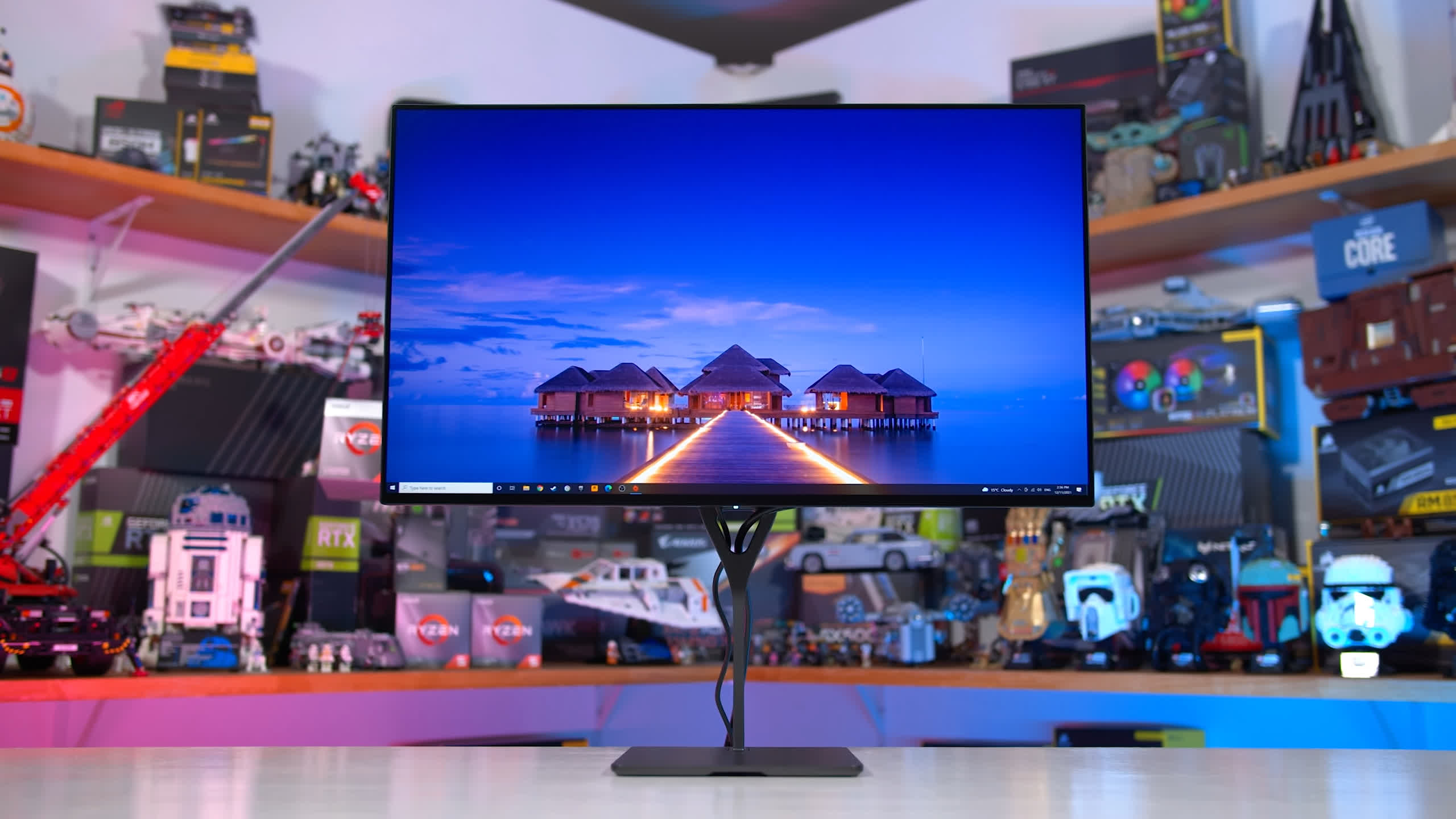
The thoroughly word is that the product arrived. We specifically ordered one after the first wafture of reviews, to emulate the experience of a purchaser WHO read one of those reviews and wanted to name a buy in.
To keep this shield-shaped, so we rear end assume the effective review, we bought the monitor at the end of July and lay away a $100 reserve with Eve claiming a merchant marine date of Sep 2021. They requested the remaining payment in the mediate of August, claiming the product was "almost ready to ship."
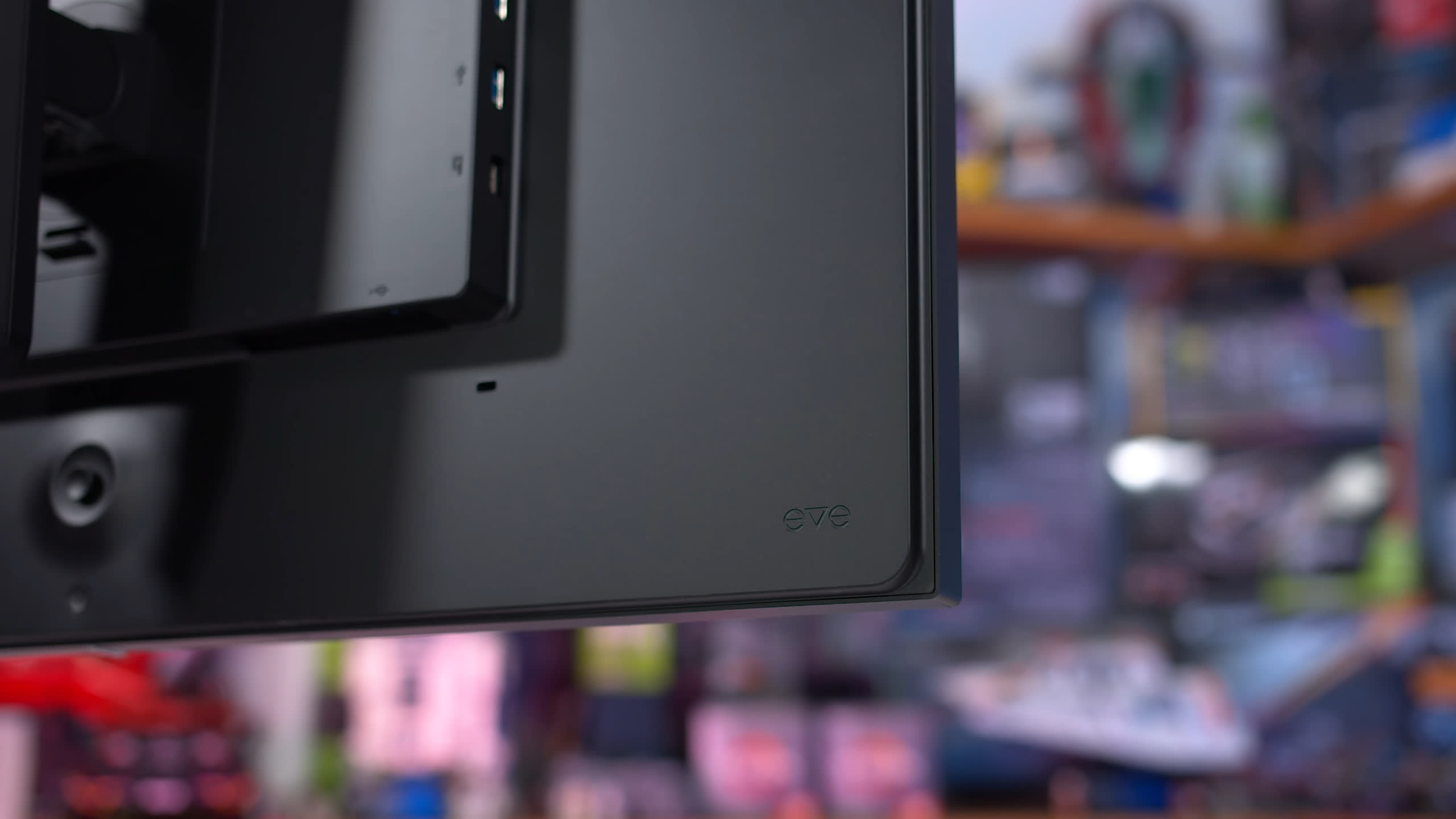
That didn't actually occur until October 4, a month and a half later, and information technology ended up arriving at its destination happening October 12. Now, that's probably not a huge issue. We bought it knowing complete well it wouldn't ship until September, and it took a a couple of unnecessary weeks to arrive, so a short stay. For those of you purchasing abroad however, on top of paying $800 for the reminder and stand, the alone merchant vessels option was $184 for supposedly "express" shipping.
We wouldn't advice buying it this way when fundamentally every other monitor we could fair buy from a local store for a fraction of the shipping price. That was to a lesser degree ideal, but for forthwith, Lashkar-e-Toiba's shift into a look at the actual hardware Eve are offering.
Design and Form Factor
The Eve Spectrum 4K is a 27-edge in 4K 144Hz gaming monitoring device with all the usual features. IT supports adaptive sync variable review rates, information technology has 1ms rated reply times through the use of an LG IPS board, and it has "HDR600" rating with dormie to 750 nits of brightness.
The big selling taper here accustomed be HDMI 2.1, although in 2021 that's non particularly special equally slews of 4K monitors include the feature. Eve also claims the display was crowd developed by 4053 members of their community, so it'll be interesting to see to it whether that's successful a difference in the final exam product.
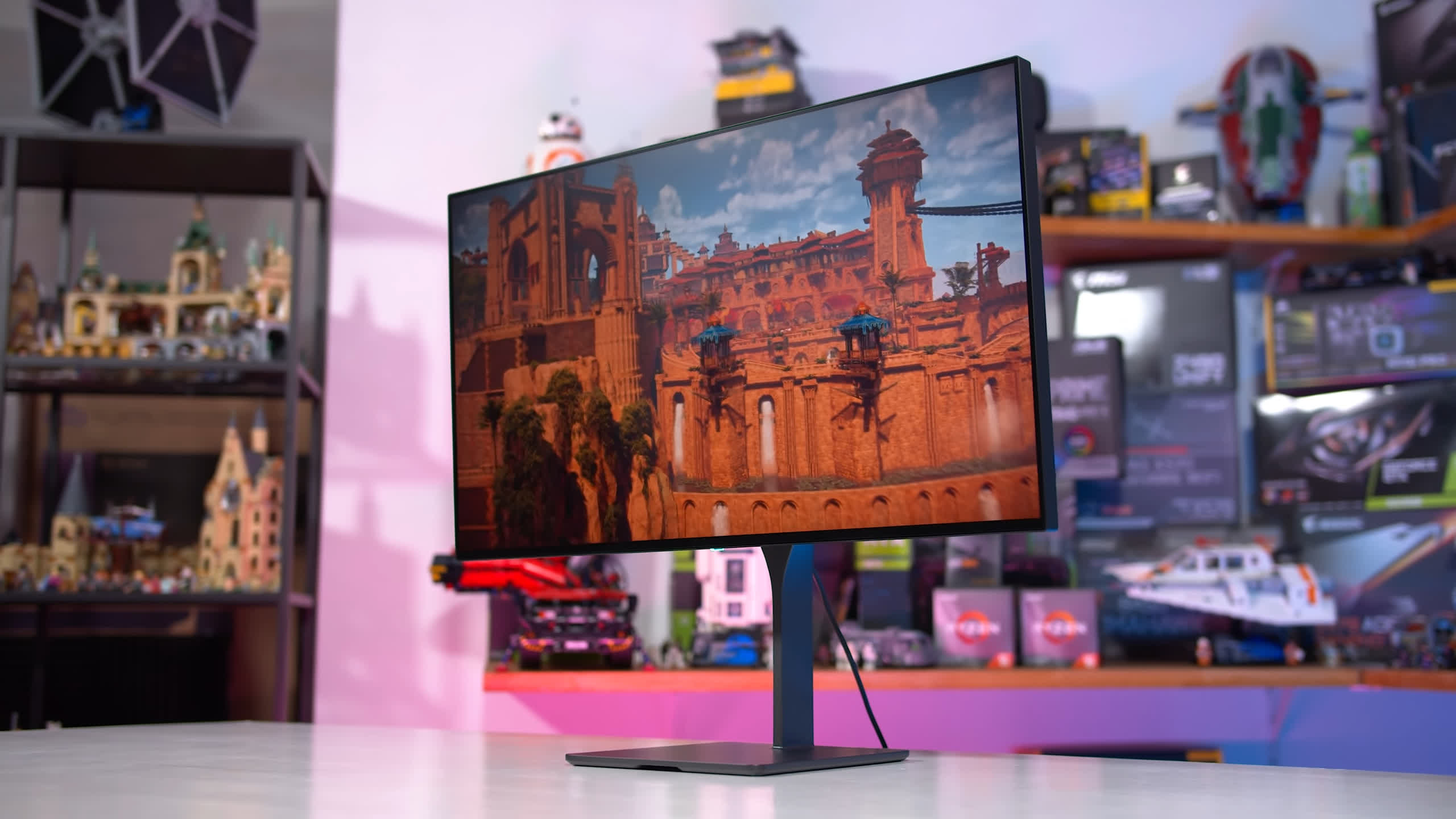
We paid $800 for the Spectrum 4K but the price has since redoubled to $900 for unexampled orders transport next year. The $900 is split into $800 for the monitor and $100 for the stand, sol if you don't want a stand (eg. for VESA mounting) you can save yourself that money.
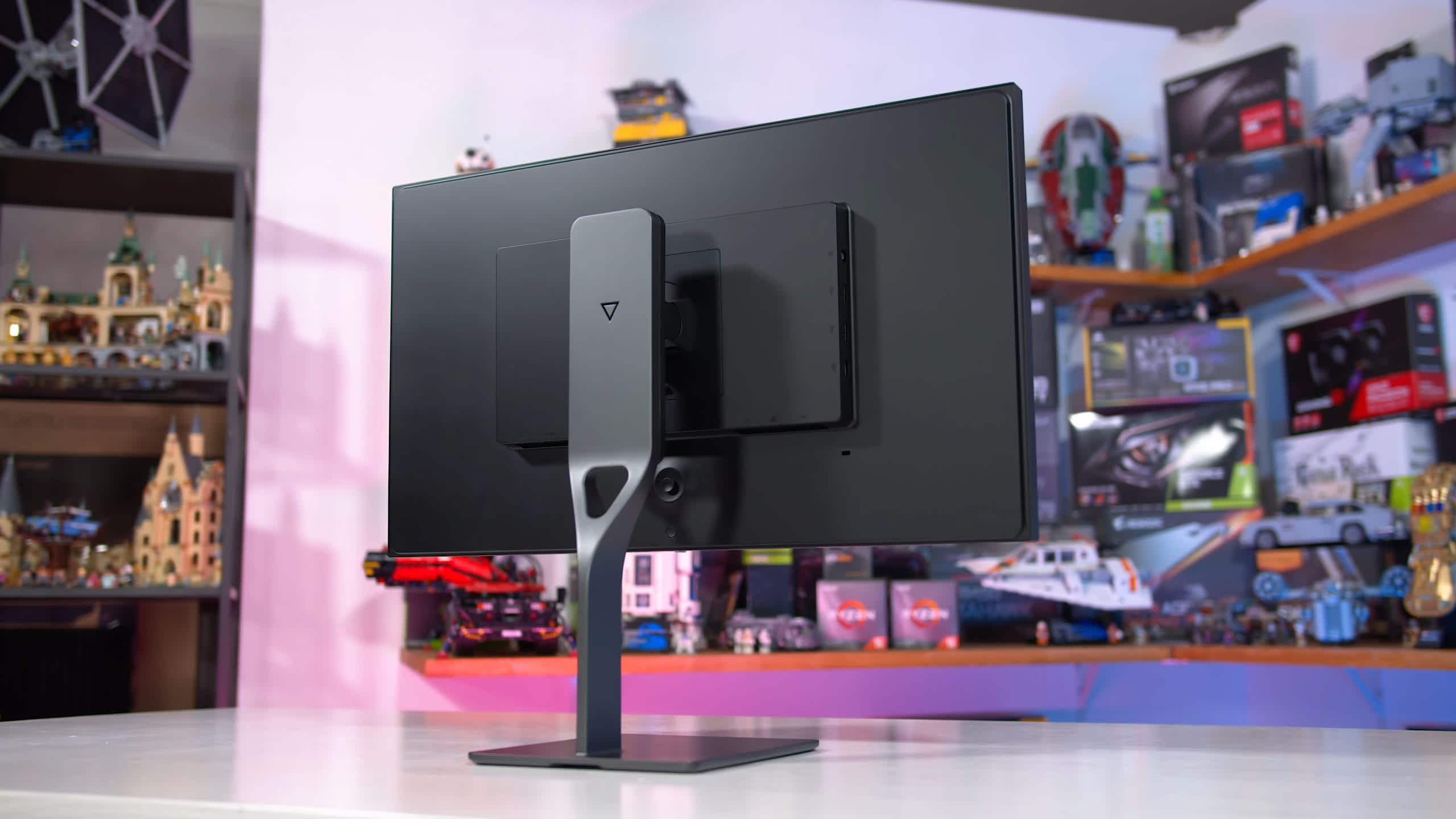
The design of the Spectrum is pretty nice and while the stand is pricey, it's quite exquisite product.
The base and mainstay are some ready-made from metal with a pleasing Charles Grey finish, and the range of tallness adjustment is excellent in addition to pivot and tilt musical accompaniment.
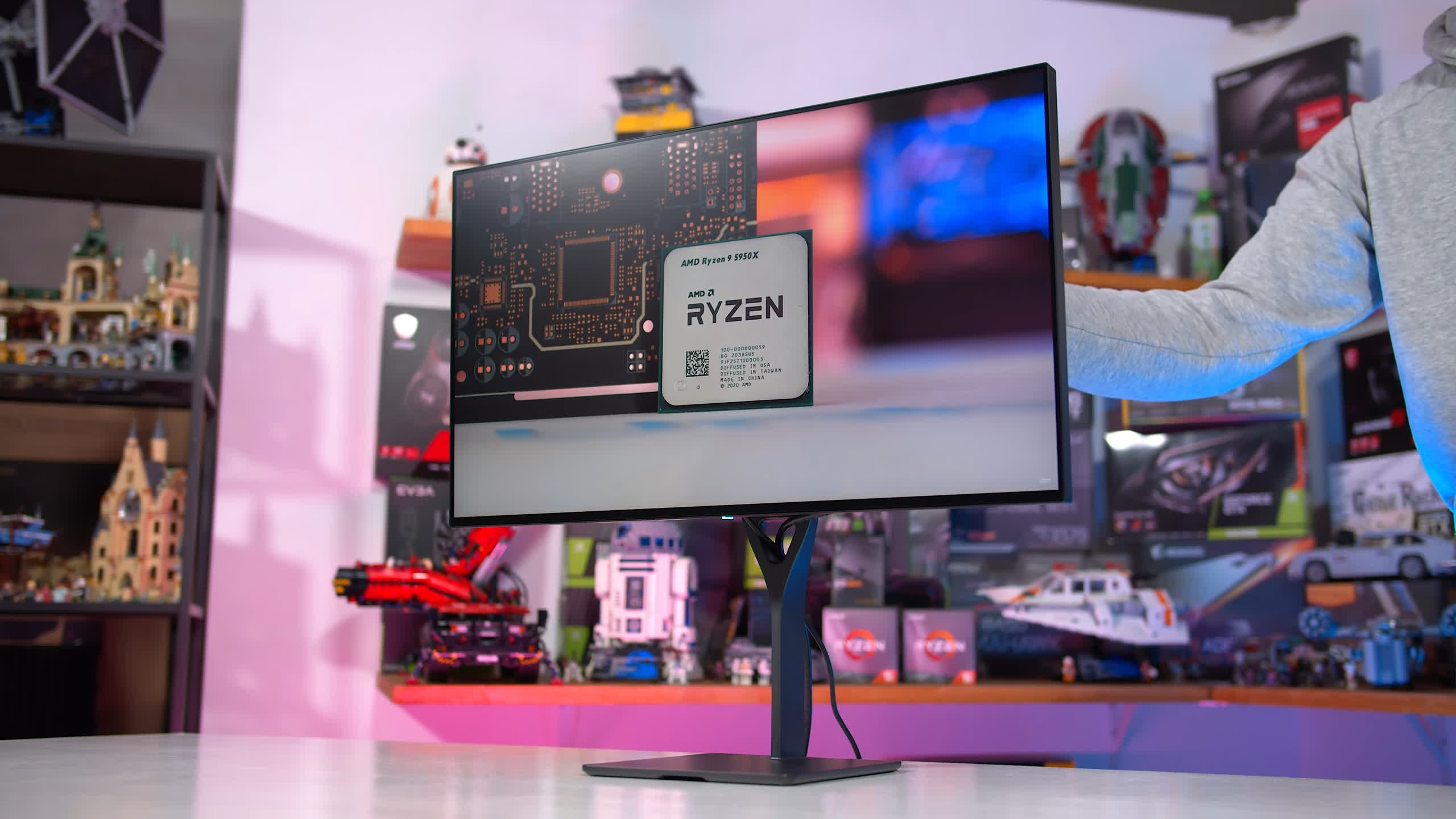
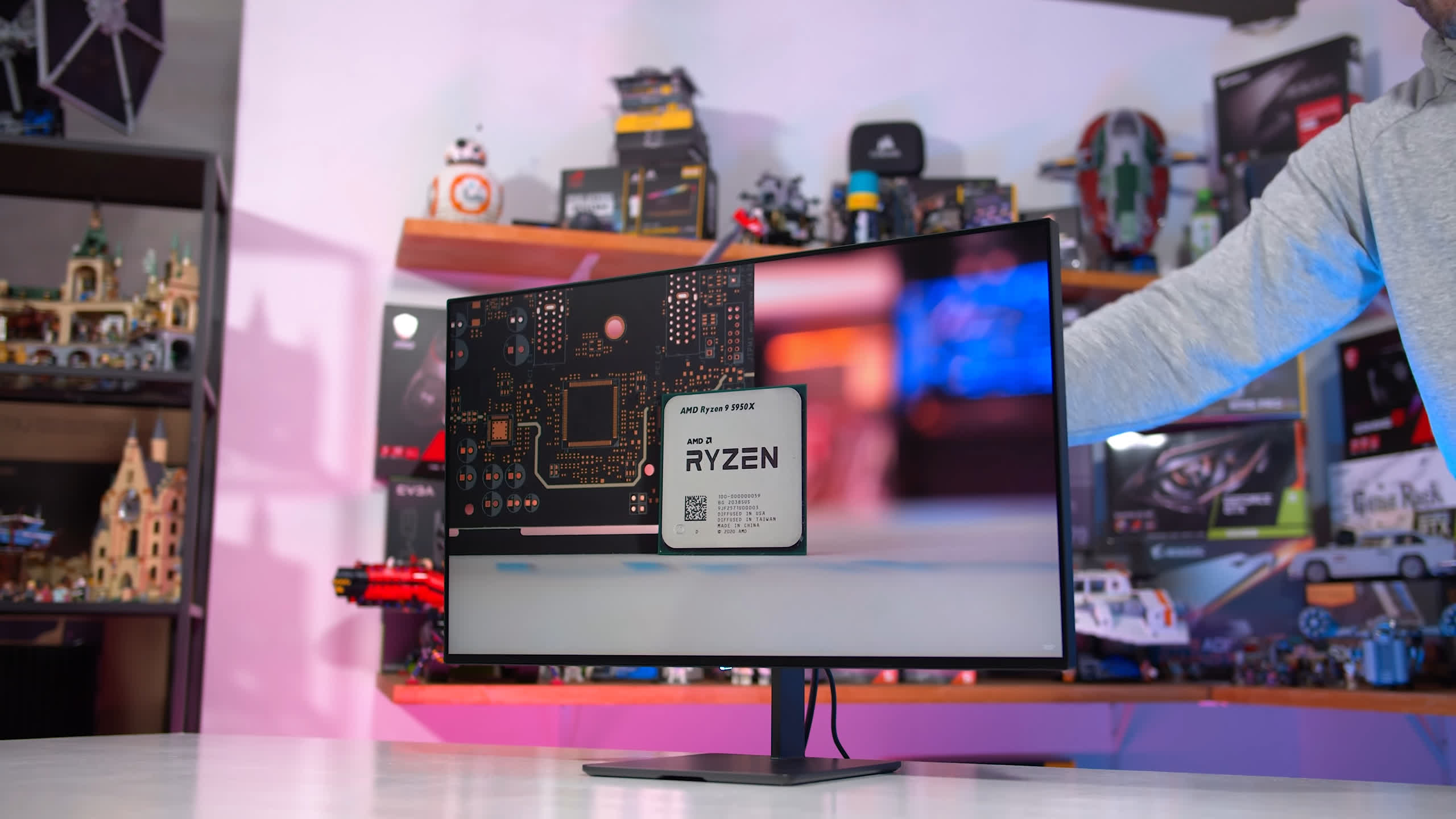
Even though the stand is thin and the send is non particularly large, information technology's sturdy general and feels good assembled. I wish the design of the display itself, slim bezels, no unnecessary gamer style junk, no RGB LEDs. Overall this would be up at that place among my favorite gaming monitor designs.
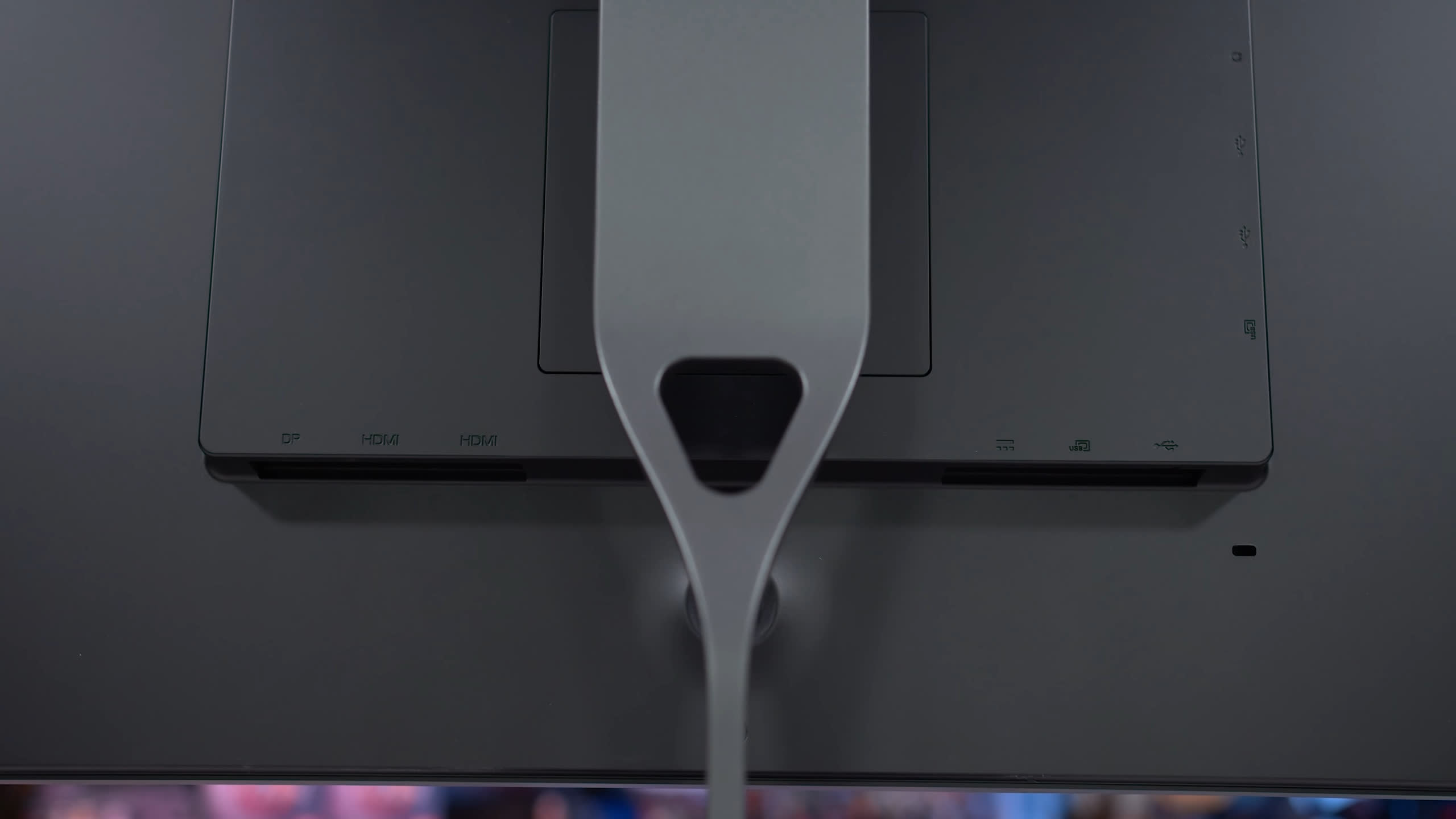
The small section on the fanny houses entirely of the ports, including uncomparable DisplayPort 1.4 with DSC and two HDMI 2.1 ports. The addition of HDMI 2.1 is indispensable on a 4K 144Hz monitoring device atomic number 3 you'd be limited to just 60Hz without it, and these are full 48Gbps ports.
Then there's as wel a USB-C stimulant, which supports DP Alt mode and 100W of power delivery which is elegant for single-cable use with laptops. Some USB outputs are also included on with an audio jack. Pretty good range of ports all up.
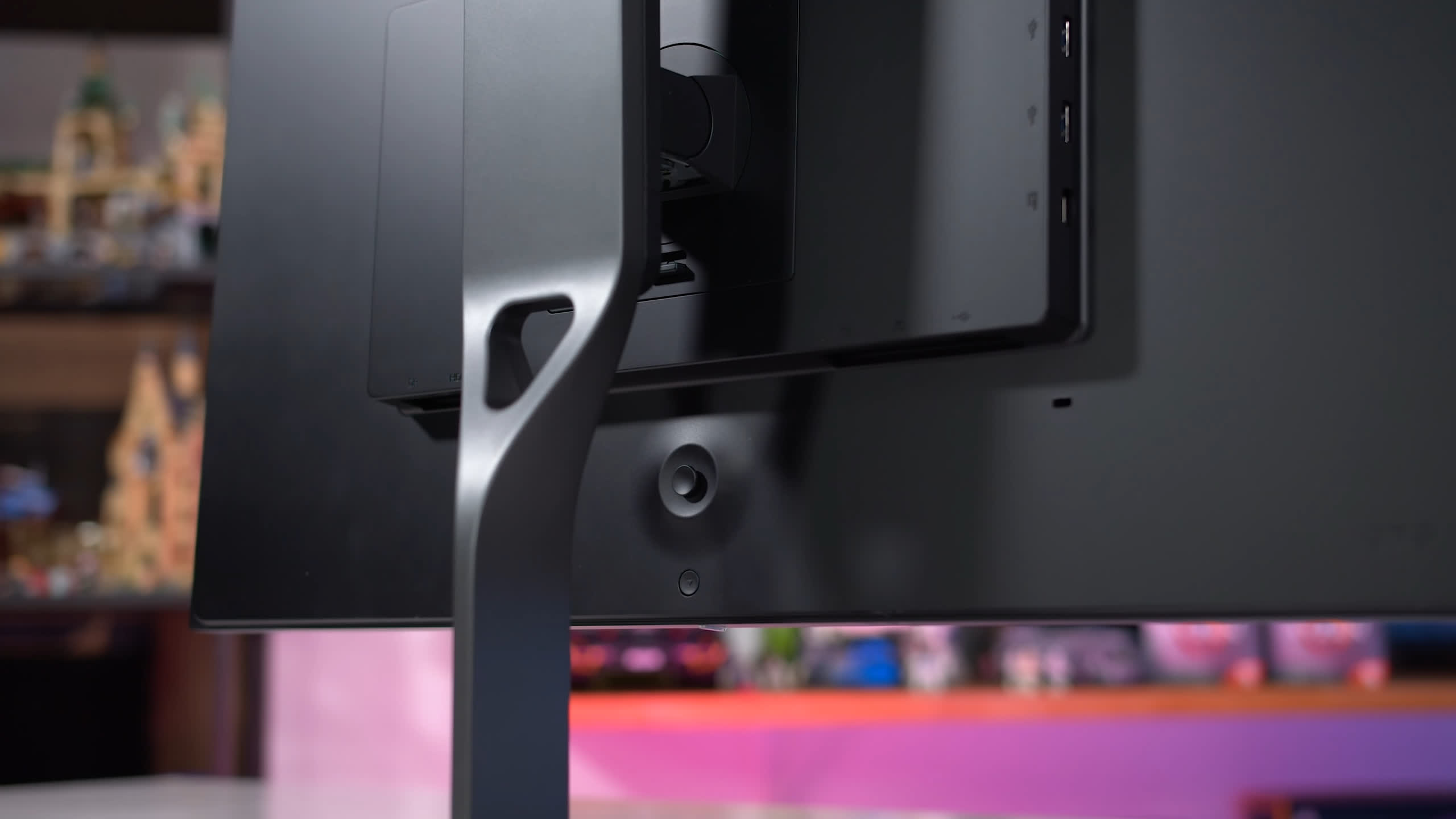
As for the on-screen display, we beat an casual to manoeuvre directional toggle on the rear, although the interface itself is basic and surprisingly low resolve on a native 4K panel.
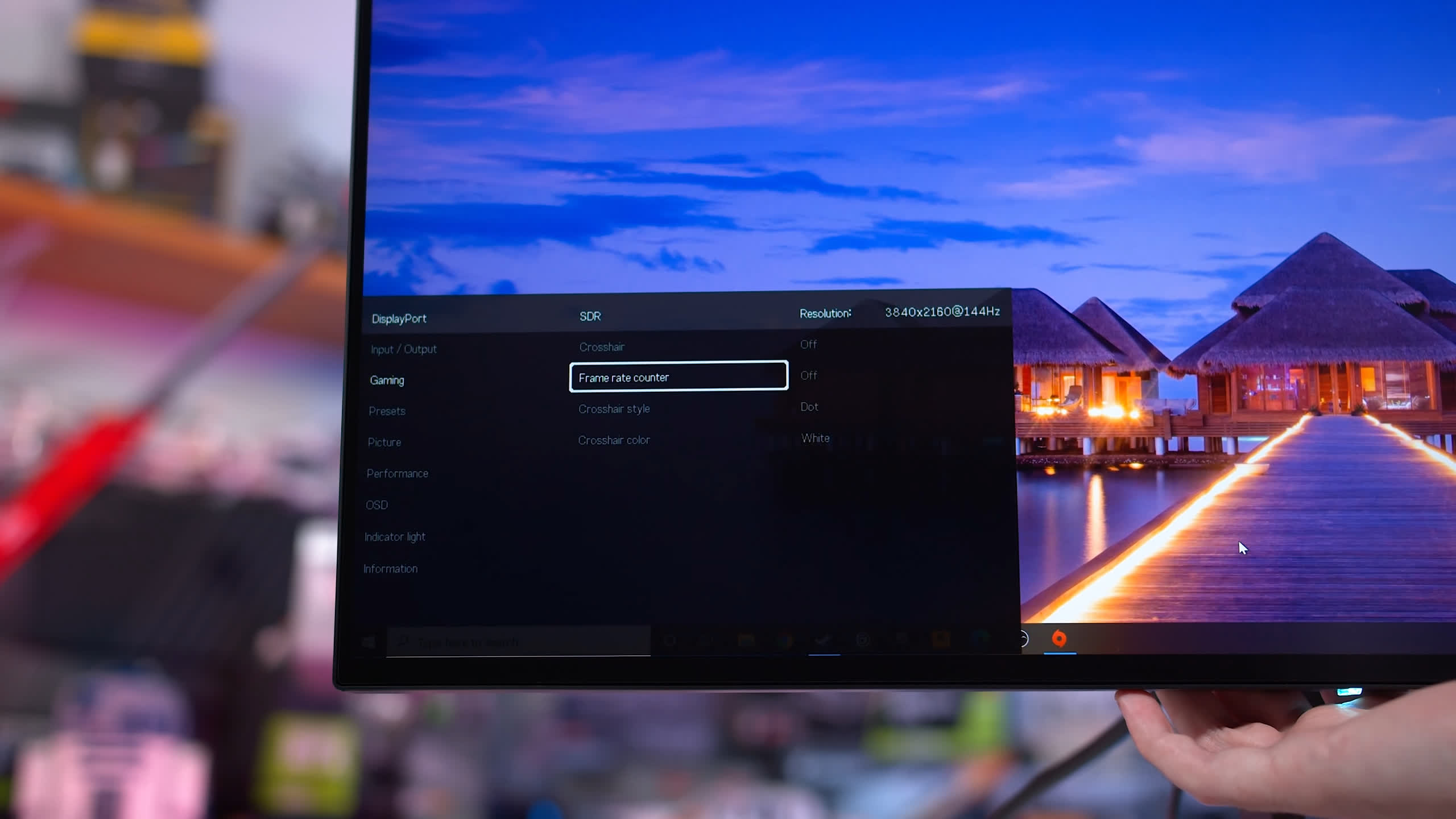
The orbit of included features is comely, it does sustain crosshair support which most other monitors besides have, plus the neat inclusion of integer scaling which can improve clarity when upscaling 1080p to 4K. I wouldn't say the feature set ahead is amazing, as competitors similar Gigabyte crack KVM switches which you assume't get here.
Showing Performance
Looking at at latent period carrying out, the Spectrum is interesting in that it provides a couple of overdrive settings in addition to user customizable overdrive through a luger. I the likes of this setup a good deal as you can actually fine tune the settings, so let's consider how it performs.
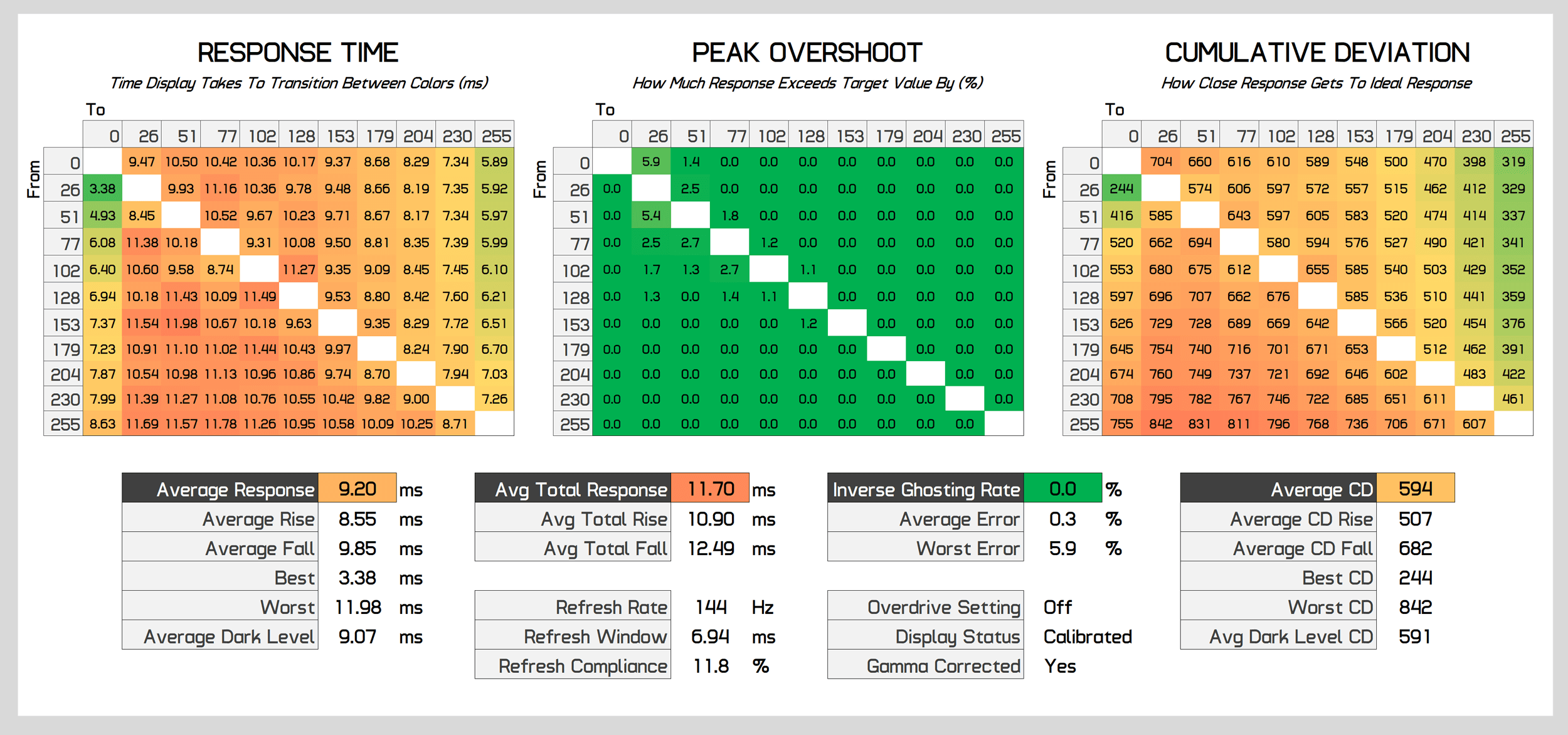
Overuse murder performance is fairly typical of LG's Nano IPS panels with a 9ms average reaction prison term and no overshoot. This mode is actually decently usable but we can improve operation by using a higher mode.
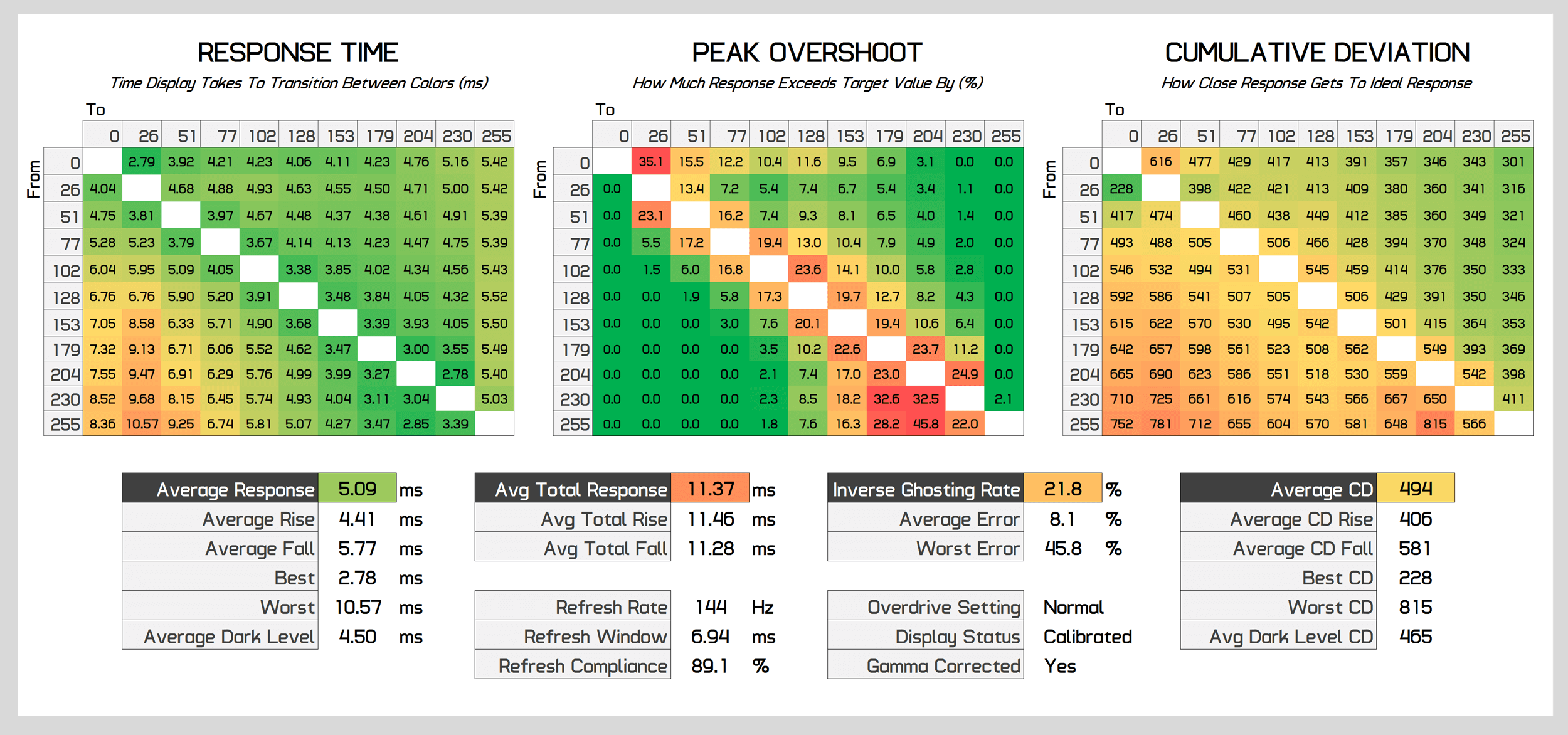
Next up the chain is the Sane modality which appears to be the most balanced betwixt response times and overshoot. There is a small amount of overshoot detected, mostly in close conjointly transitions, which in practice isn't noticeable while gaming. The average response has landscaped to a very solid 5ms ordinary, which is what Eve advertises as the panels "characteristic" response. Accumulative deviation is also better than in the prior mode.
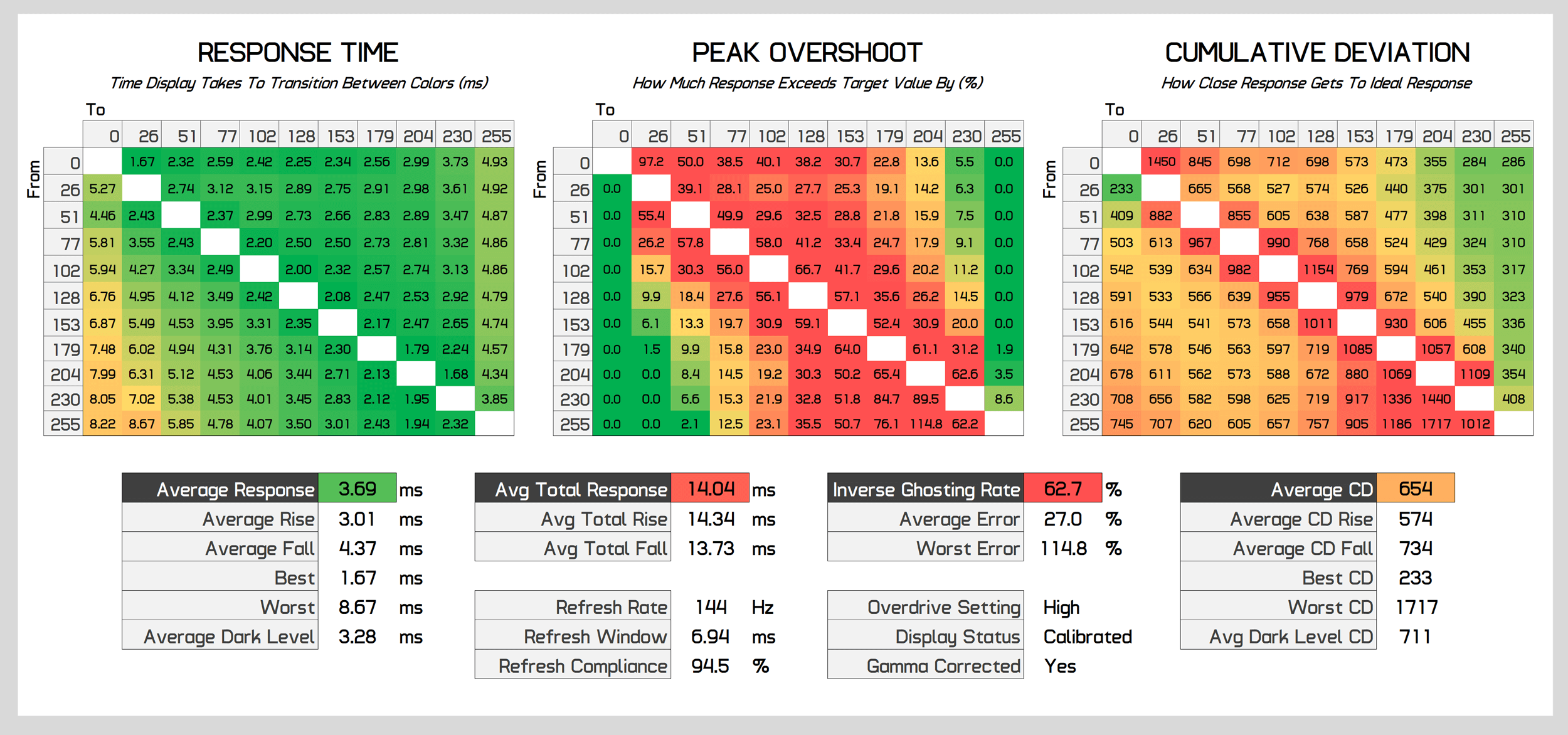
The High mode is your typical too-fast mood that's designed to push a faster response time than the LCD jury bum actually accomplish. While the reception time normal is better than the Normal mode, overshoot is significant and noticeable, leadership to inverse ghosting trails. Cumulative deviation is worsened than the Pattern mode, so we've gone backwards when weighing up the balance betwixt speed and wave-off.
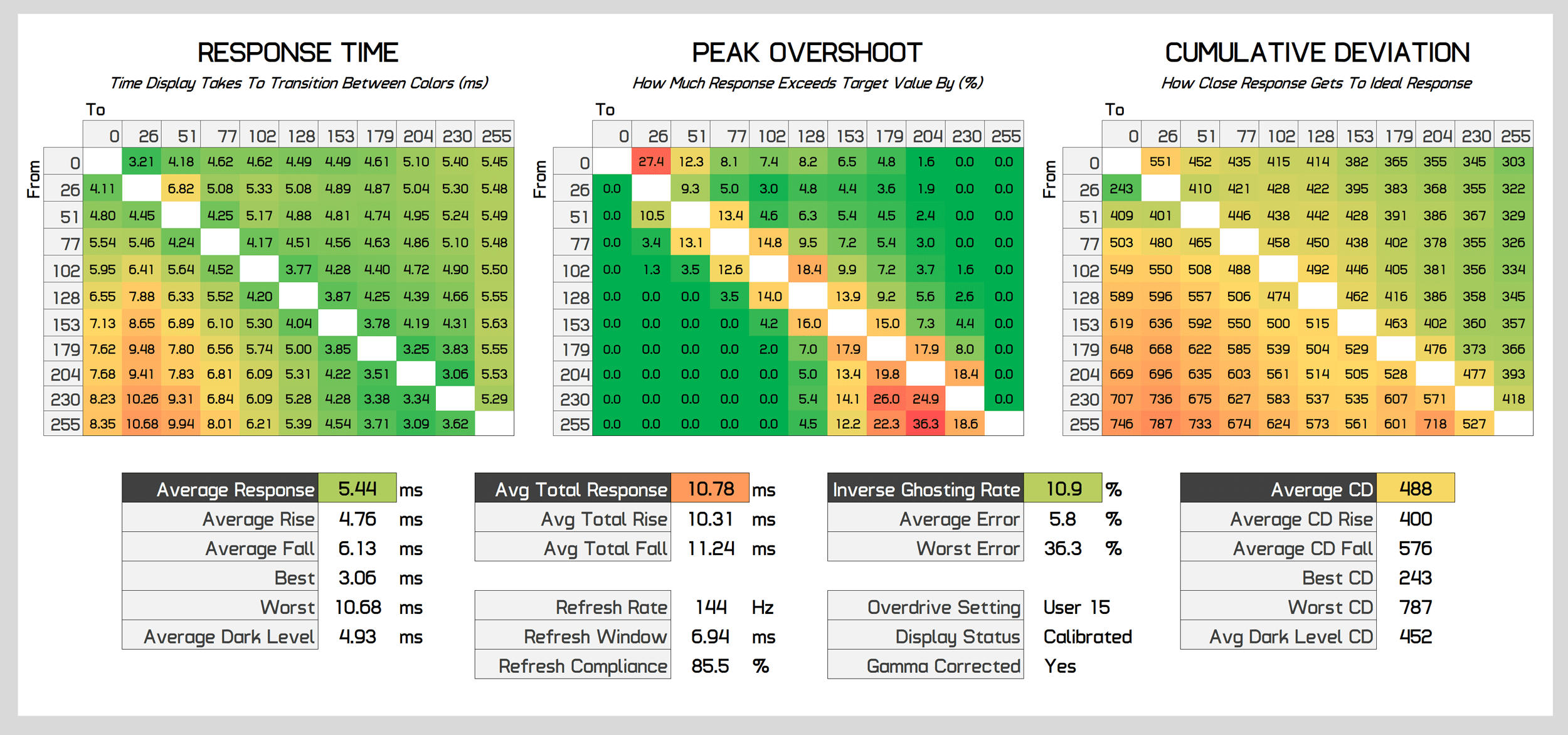
On the far side this you can control overdrive via the user customizable slider, which allows values between 0 and 63. However I found that a significant portion of the range is useless with quite a screaky level of overshoot. Sol I'll cut to the chase. When optimizing for the lowest cumulative deviation, I found a value of approximately 15 to give the best experience at 144Hz.
This mise en scene is slightly slower than the Sane mode, but to a negligible degree really, but has a turn down amount of overshoot. This is what I'd use for high refresh rate gaming, although the Natural mode is also pretty solid if you preceptor't need to muck about.
As for adjustive sync gaming across the brush up pasture, Eve claims the supervise has variable overdrive, although I preceptor't see any evidence of this in practice. They might be incorrectly using the term to mean the user customizable overuse scope, which is different to actual versatile overdrive, where the monitor automatically adjusts its overdrive settings depending on the refresh rate for the best feel for.
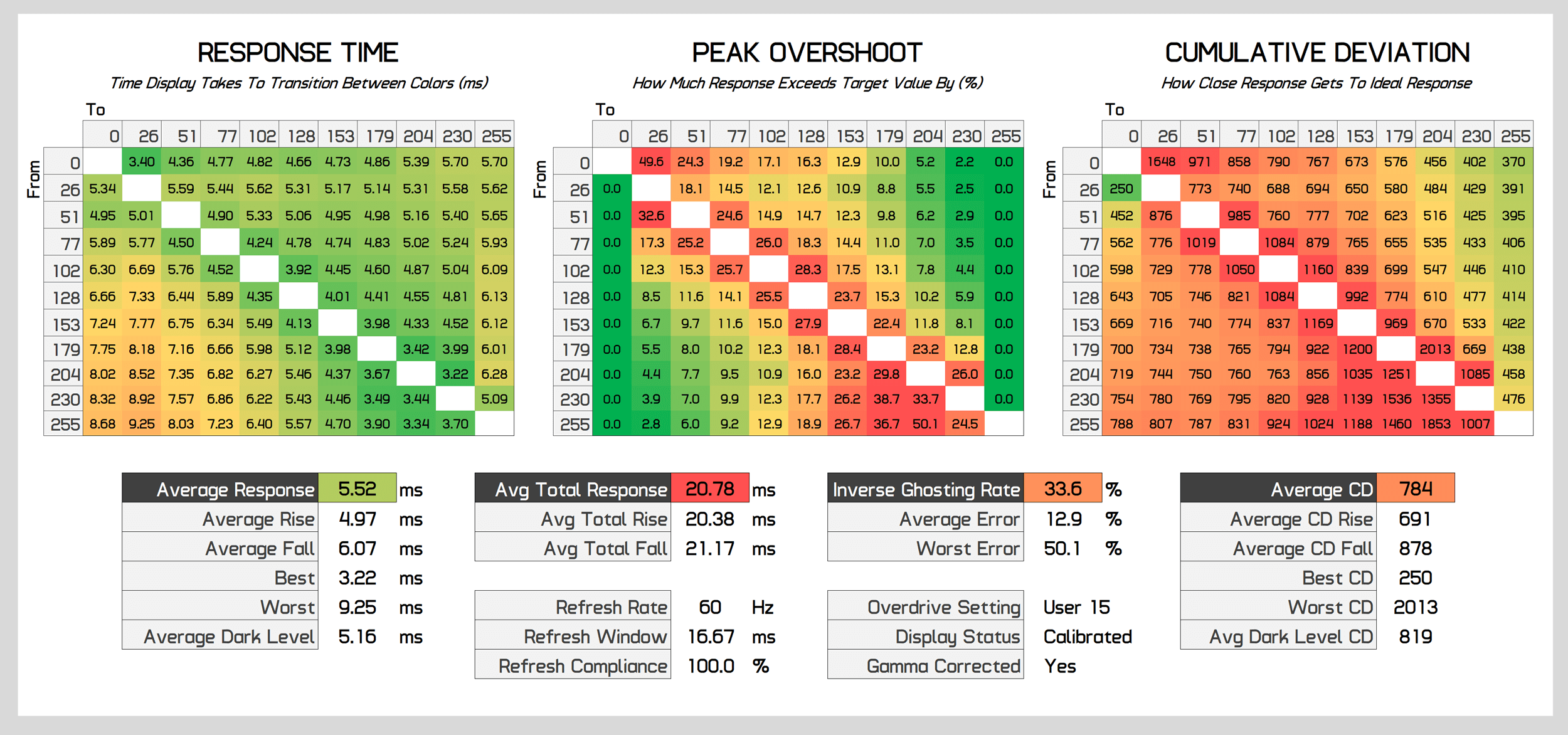
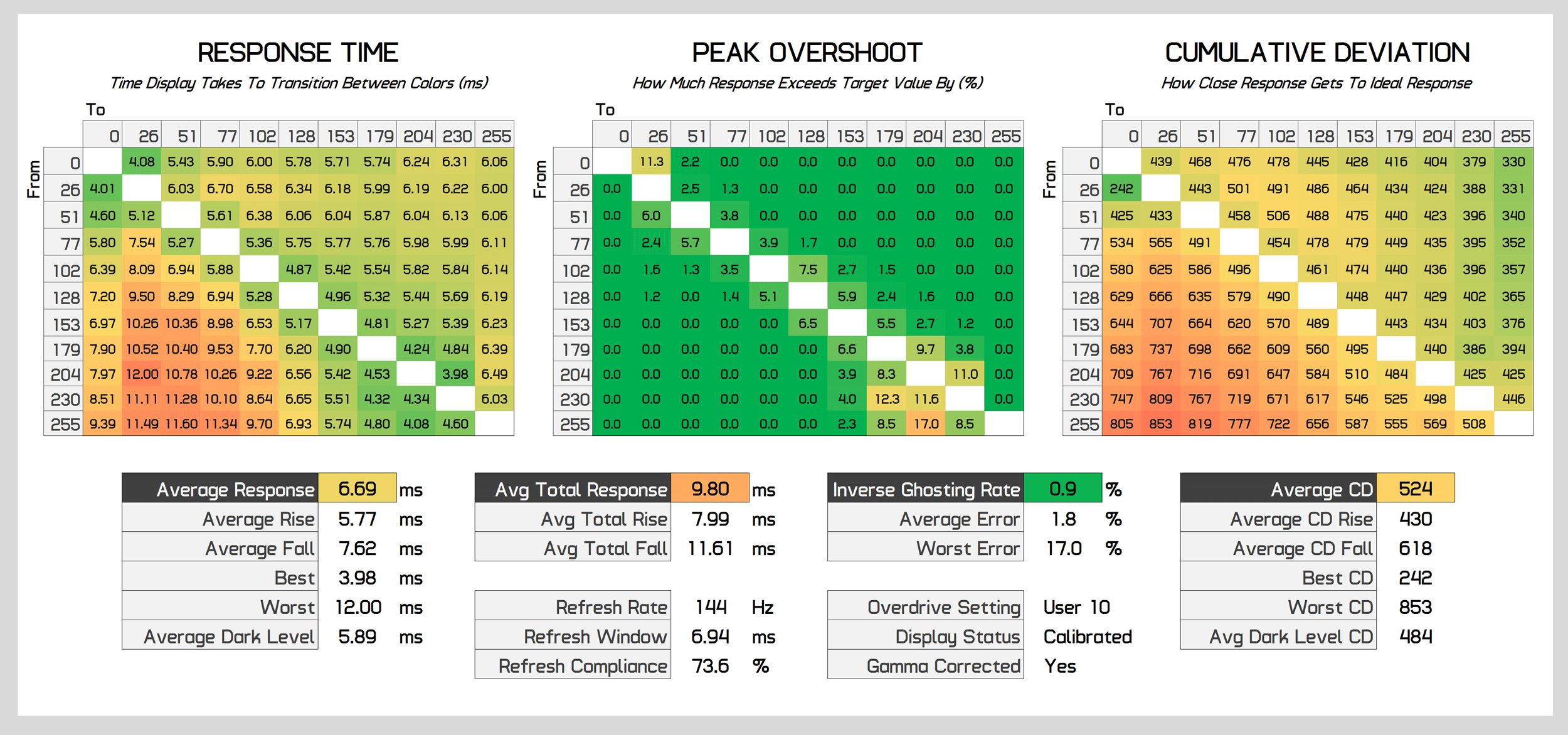
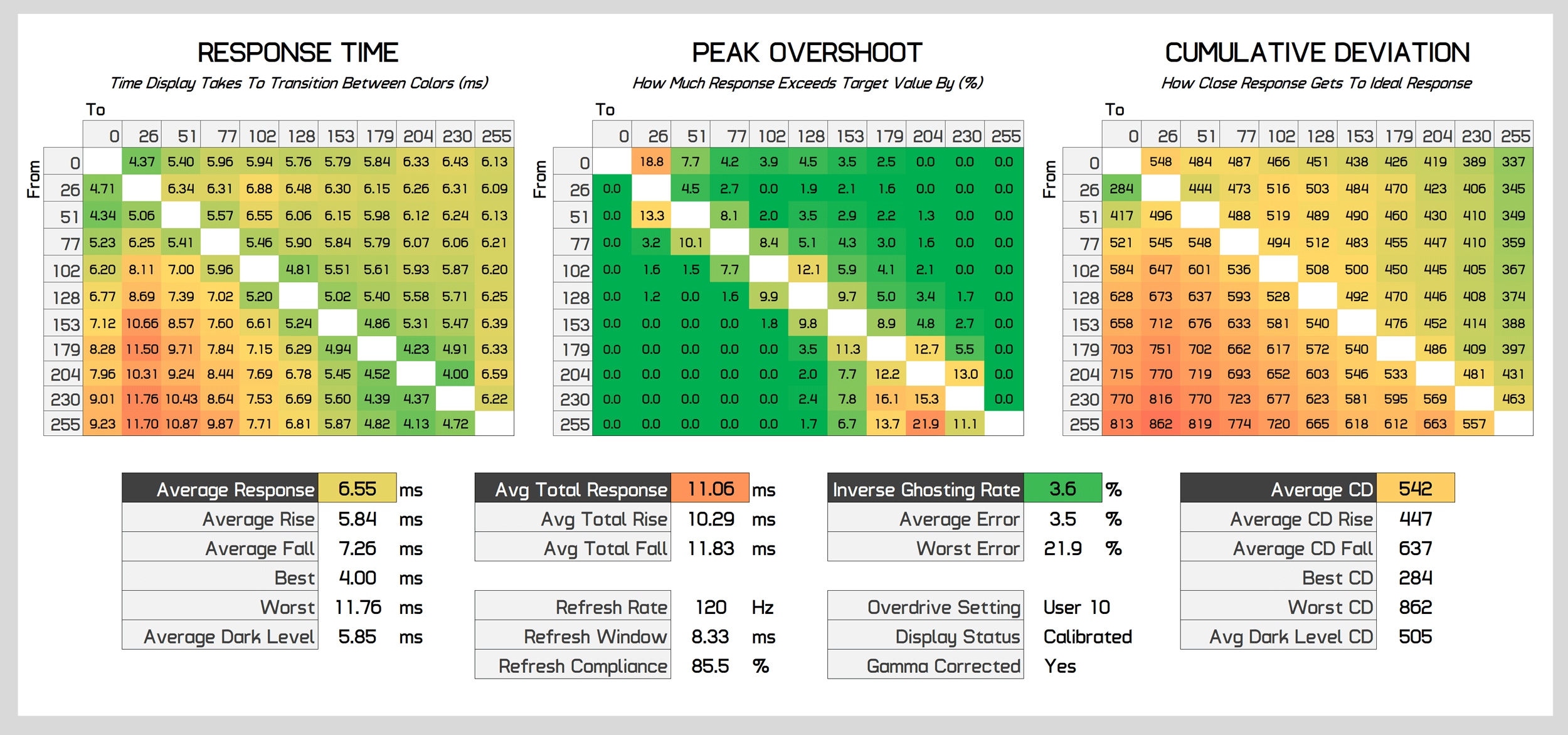
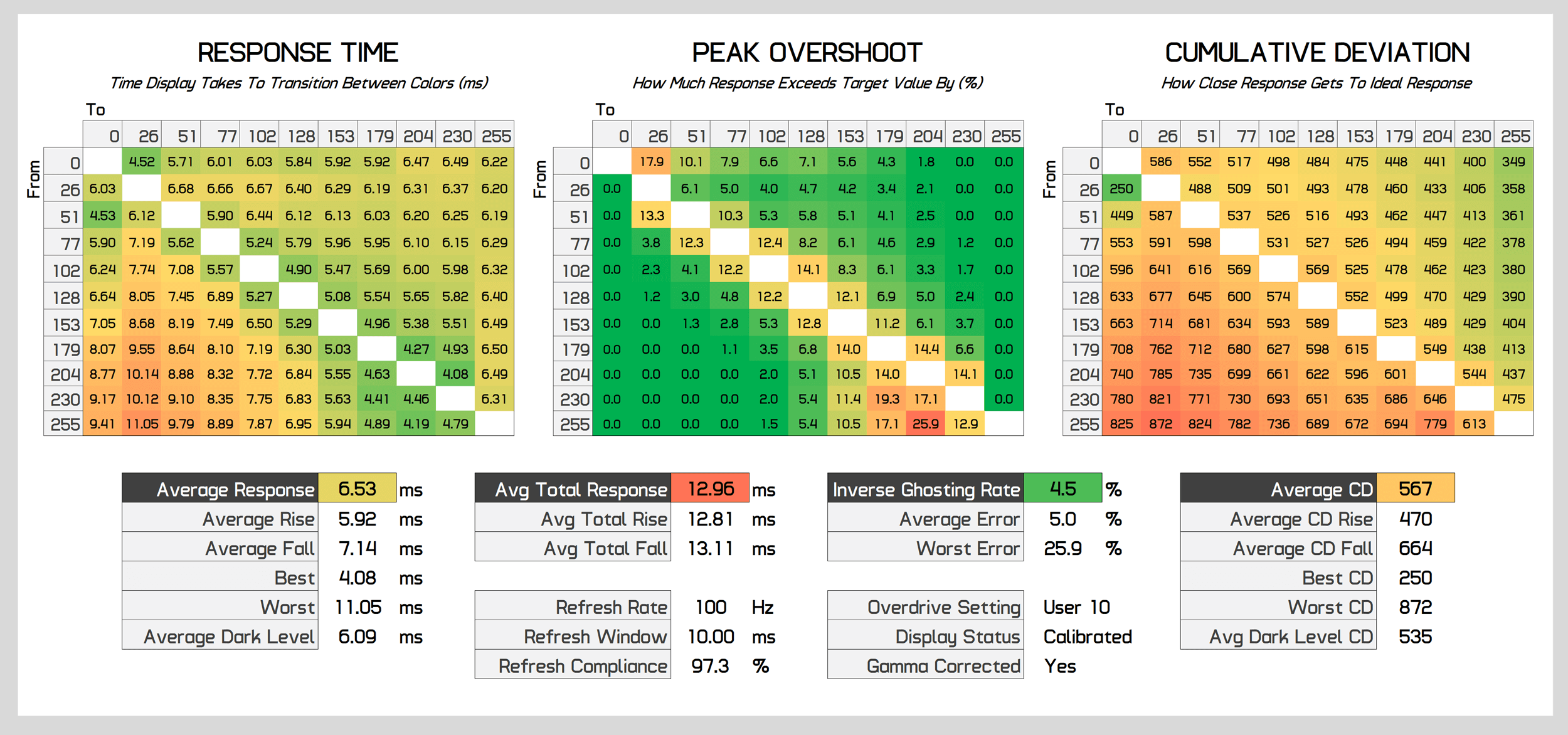
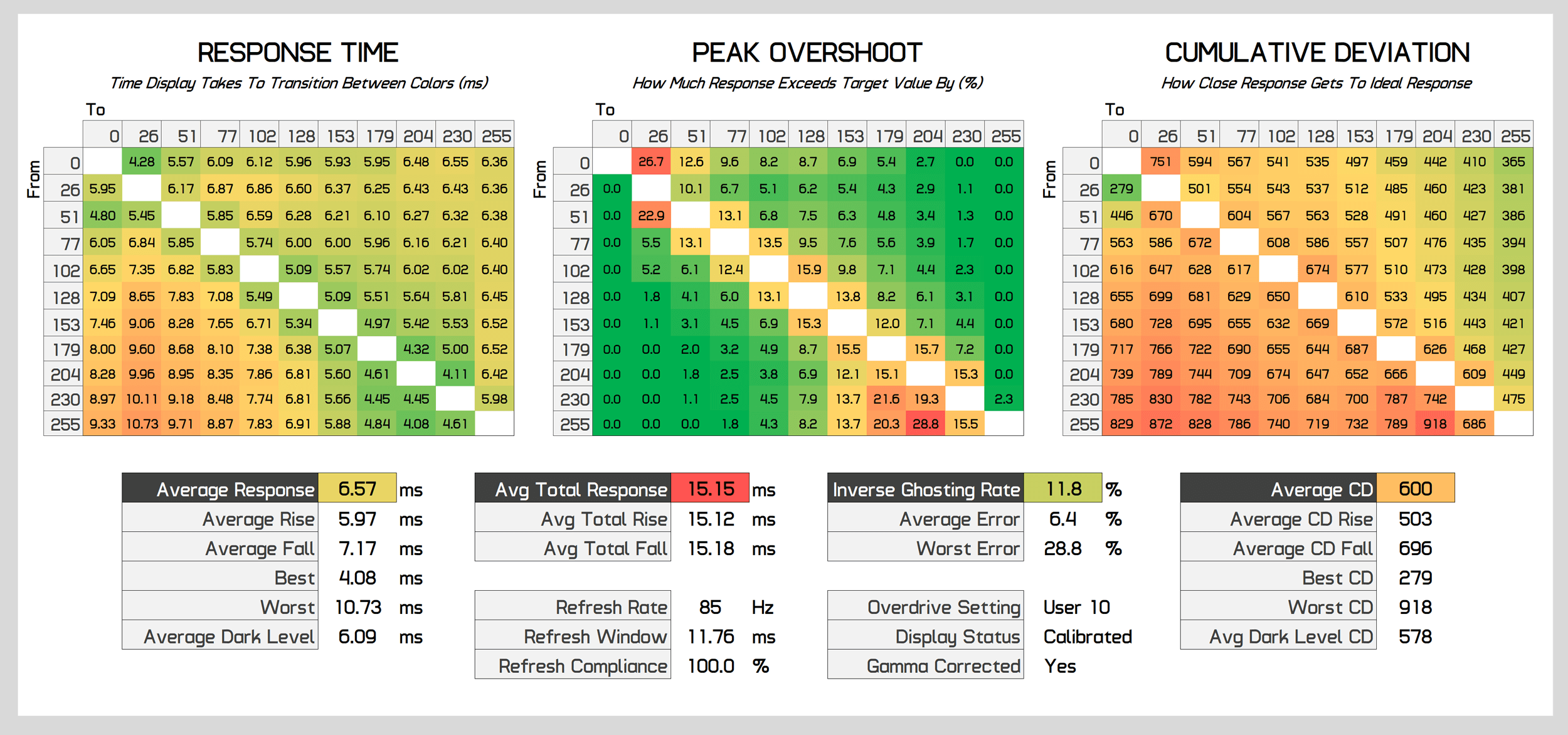
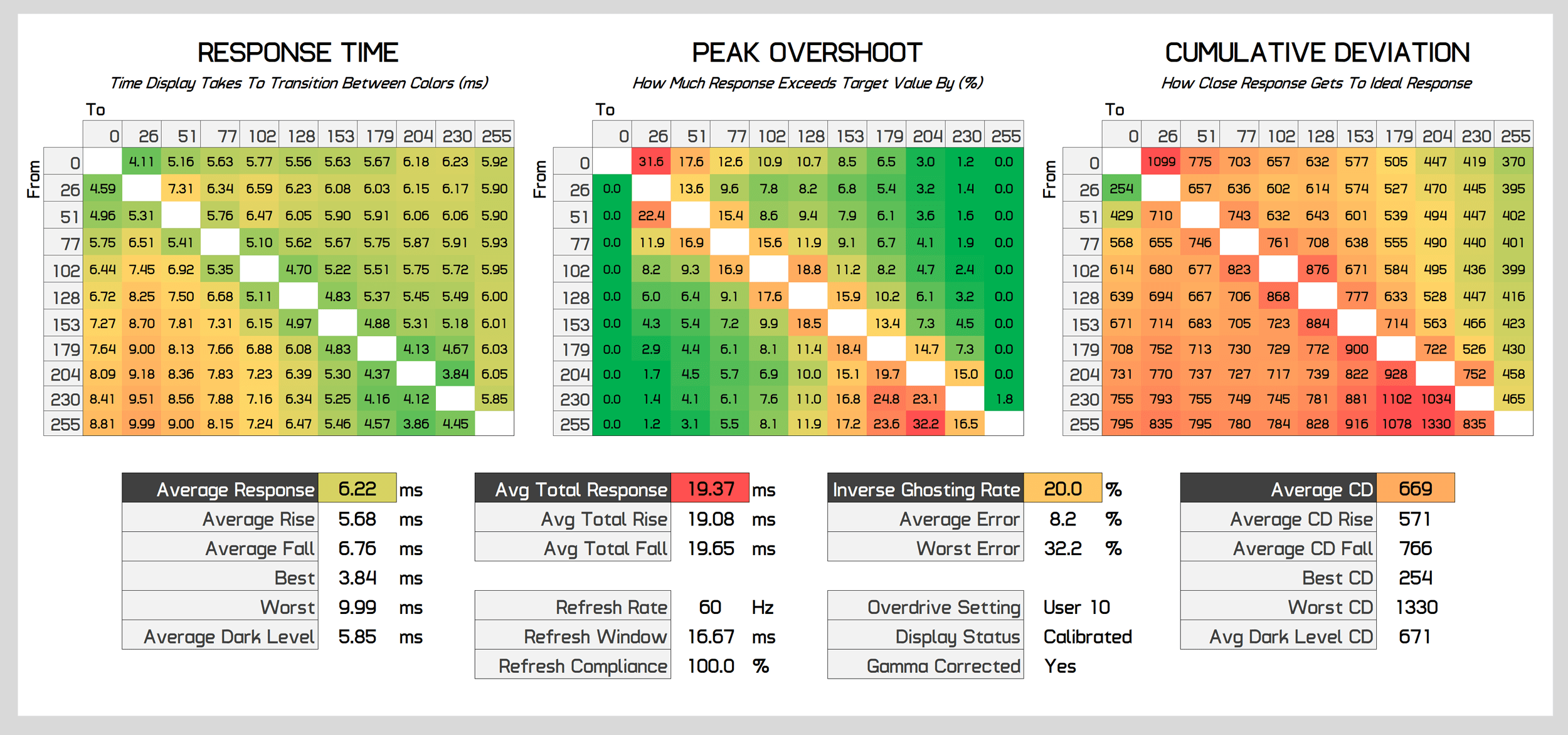
The basics are that using a user setting of 15 for overdrive causes a bit too much inverse ghosting at 60Hz. Later on heedful testing of a ramble of overuse options, I all over up settling on a exploiter setting of 10 for the best see across the refresh run. This modal value is a bit slower at 144Hz at a 6.55ms response time average, but still packs keen public presentation with a limited measure of overshoot at 60Hz, and everything in 'tween those review rates. Victimisation this mood provides what I'd describe American Samoa a single overuse mode experience, even if it technically doesn't use variable overdrive.

Compared to opposite monitors, the Evening Spectrum is decent at its maximum 144Hz refresh rate. Reaction times are in the approximate range of other IPS monitors, while retaining a low level of inverse ghosting. I was fit to tune the monitor using the user adjustable overdrive to be slightly better than LG's 27GN950 A good, which uses a similar control panel.

On average across the brush up place, the Spectrum and 27GN950 are virtually selfsame. While it's nice to receive all that user customizable overdrive controls to get the best out of the display, it seems LG is already doing that for you with their offering, so this doesn't give Eve a big advantage on average. Performance again is solid and swell self-balancing, though a monitor like the GB M28U International Relations and Security Network't whol that antithetic if we're being honest, providing fast response times at the cost of overshoot.

And that's seen further when look additive deviance, which shows the balance wheel between response multiplication and wave-off. The Gigabyte M28U performs well, among the best for an IPS monitor. The 27GN950 and Eve Spectrum are slightly posterior, although genuinely all these monitors deliver a very similar have on median. The carrying out is proper where I'd want it to be for a modern IPS gaming monitor, which is a result between 500 and 600 in this metric linear unit.


At 120Hz the Spectrum is a mid-table performing artist, delivering comme il faut results for solace gamers look at that 4K 120Hz experience over HDMI 2.1. Then at 60Hz the Spectrum is once more, jolly typical in terms of its performance with no notable issues. IT's slightly slower than the 27GN950 but non to the degree where you should complain, as basically those two monitors deliver the duplicate performance.

Input lag is a dead letter with the Spectrum, providing less than 1ms of processing check and mid-tier results all up. The main limiting factor in for stimulant latency is the refresh rate, as 144Hz is noticeably slower than 240Hz Beaver State higher monitors in footing of lag and smoothness. At this sort of terms point you can toss away up between 4K 144Hz or 1440p 240Hz, so if you wreak a lot of competitive titles the quicker freshen up rate may exist of interest to you.

And then we get to power consumption. Unsurprisingly the 27GN950 and ES07D03 are basically superposable for index ingestion when graduated to the same brightness output. Both use the Saame panel, so I wouldn't gestate anything different.
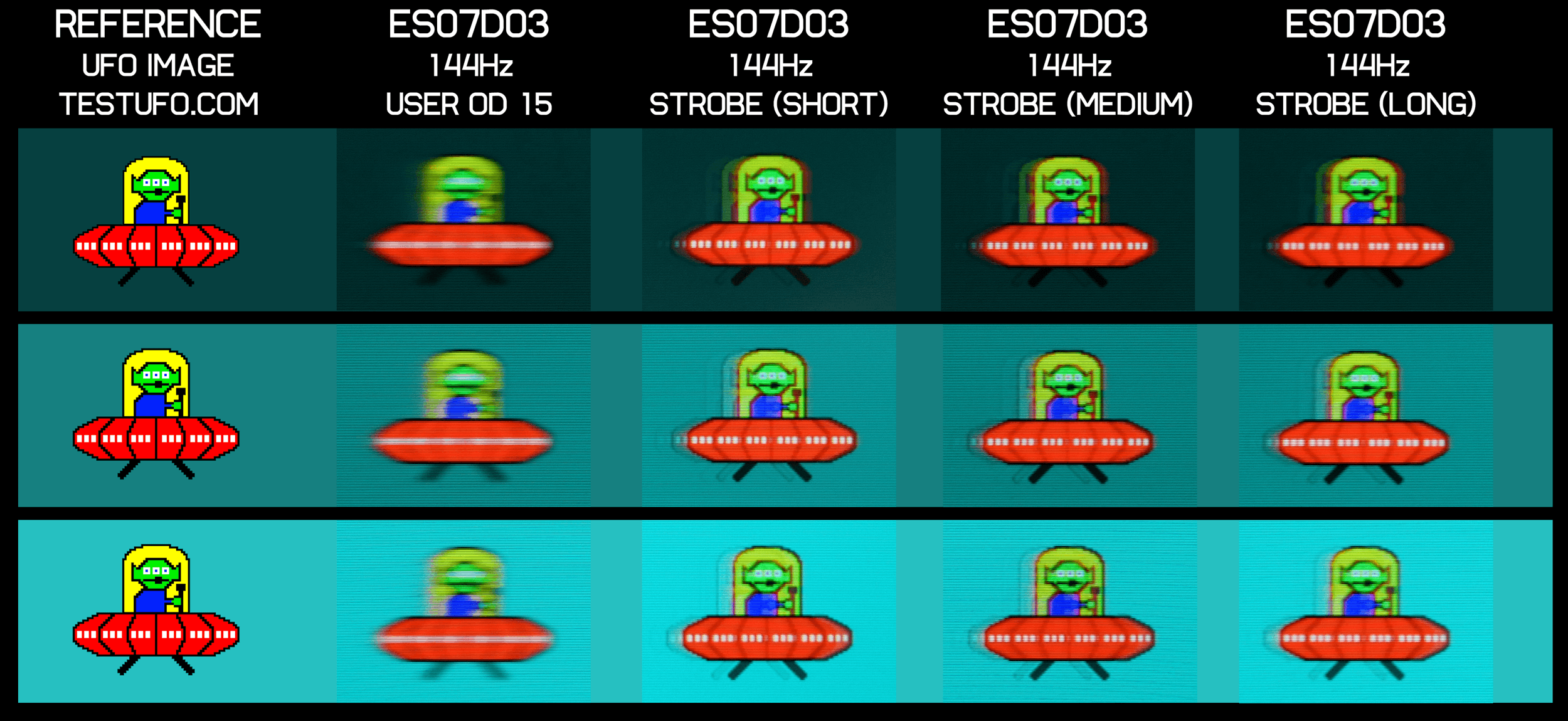
The Eve Spectrum supports backlight strobing, and it's a really great implementation, particularly for this sort of board. The shapely in presets have minimal strobe crosstalk or double images, leading to noticeably improved clarity compared to running without strobing, and not that many artefacts aside from a slight get behind. You get down the best image quality with the "short" pulsation width, just the lowest brightness, although evening the "long" pulse breadth with a high level of brightness is soundless decent. This can be further tweaked victimization either the well-stacked in user controls in the OSD, or the BlurBusters Strobe Utility, for the optimal results.
This level of flexibility and control over the strobing mode is what other companies should be aiming for with their modes, because information technology always delivers the best results. The Eve Spectrum ends up with great strobing, and a blown-up degree of flexibility, including the ability to use strobing with any refreshen rate, such equally 60Hz which is non possible with more other monitors.
However there are whatsoever drawbacks. Overall strobe quality ISN't perfect attributable the persistent issue with KSF backlight LCDs, which is the dragging red phosphor. This causes red trails when using backlight strobing, and this can be quite an broad steady when the level of strobe crosstalk is low. For that reason you may not want to habit it. Eve also doesn't support using backlight strobing and reconciling sync at the same time, which is increasing in popularity with strange brands.
Color Functioning
Color Space: Eve Spectrum 4K - D65-P3
Moving now into semblance carrying into action and the Eve Spectrum is a typical fanlike gamut monitoring device using an LG panel. IT has 97% DCI-P3 coverage, which is very wide and well appropriate to influence in this colourize space. Beyond that, support for Adobe RGB is more limited and overall Rec. 2020 reportage is 71%, which is an average result aside modern reminder standards.
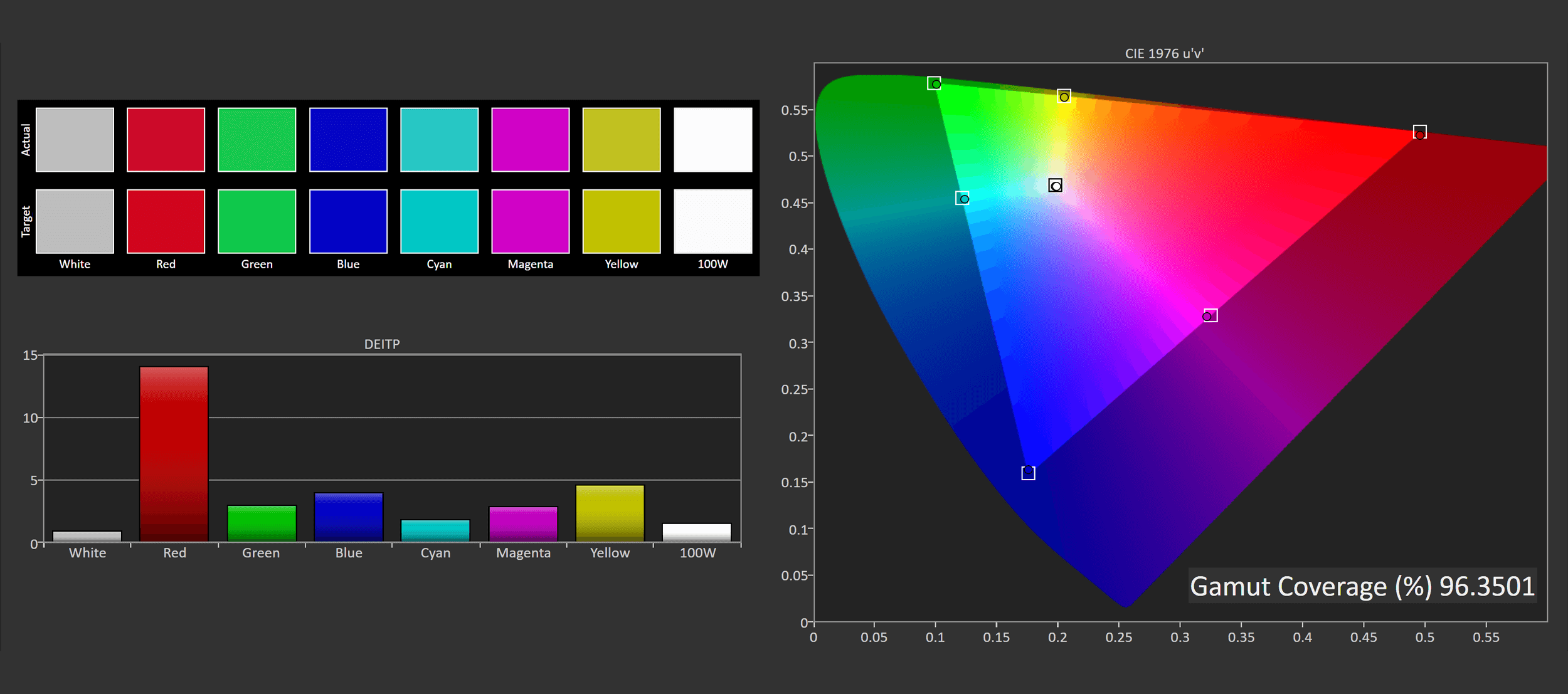
Default Color Performance
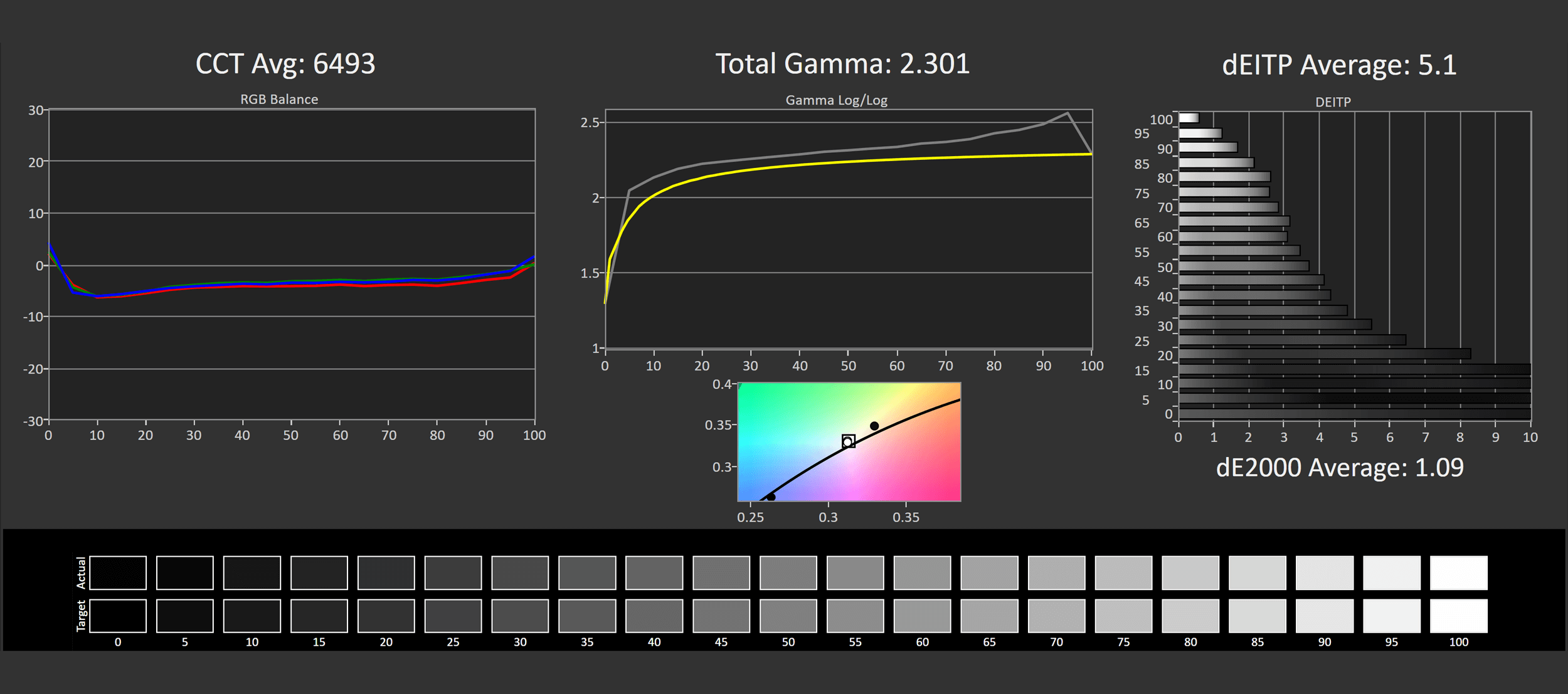
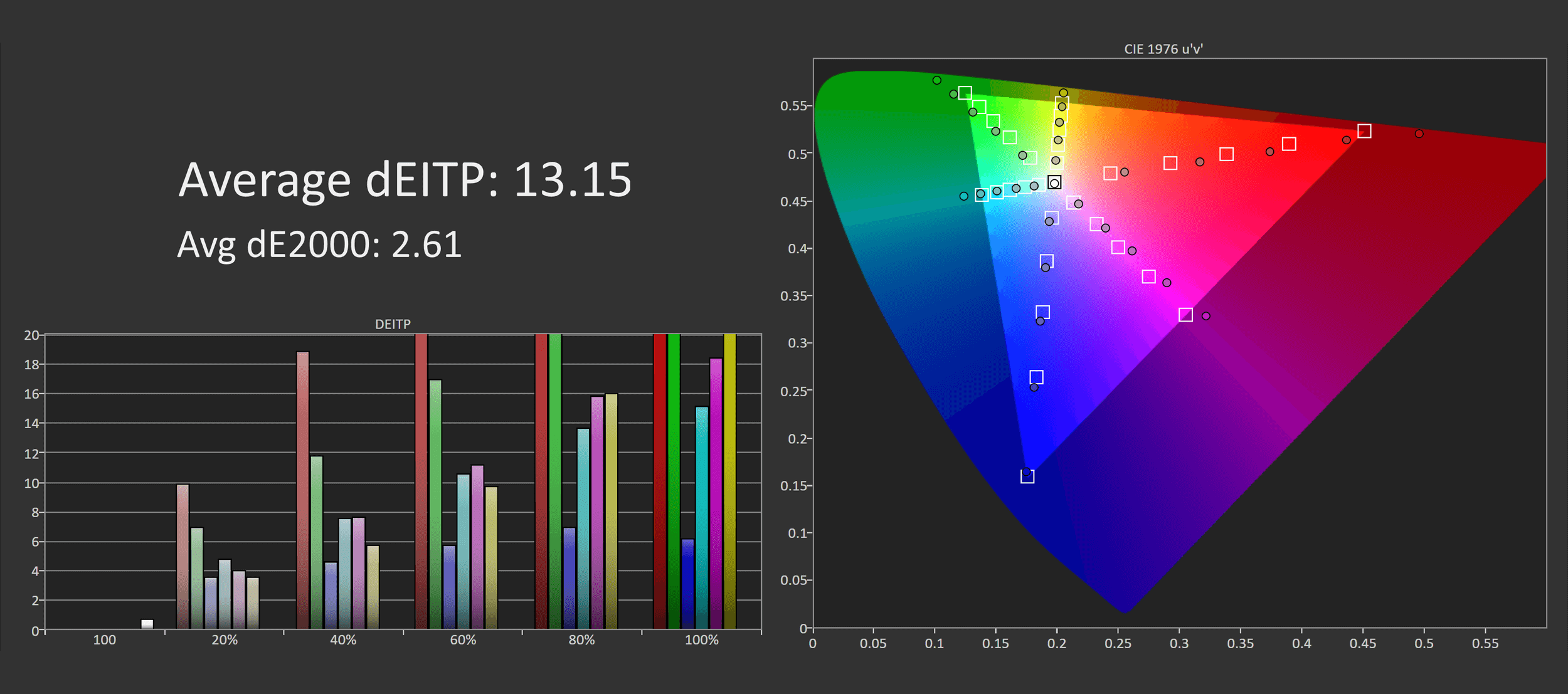
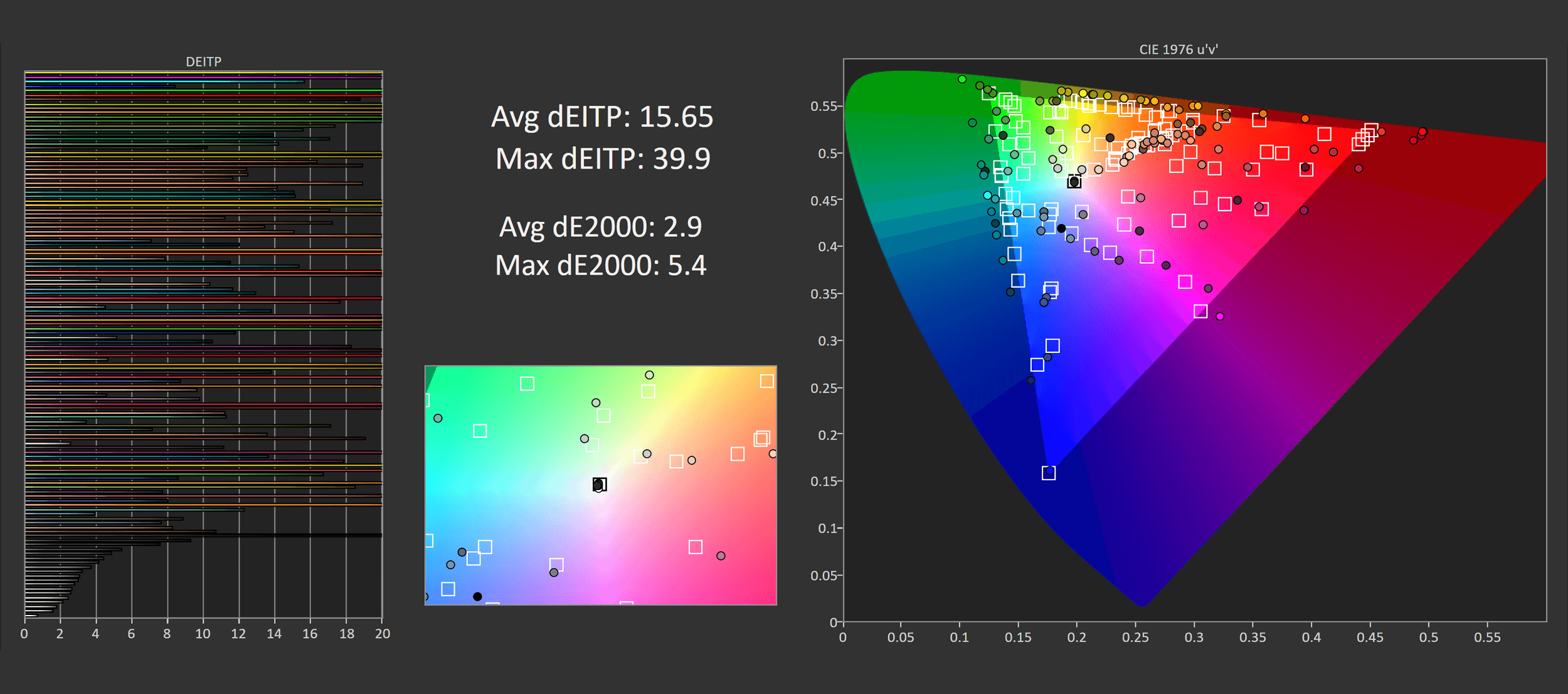
Default option factory calibration was pretty white with my unit, at least for greyscale execution. The CCT curve is impressively flat and counterpoised, leading to consummate tone out of the box. The da Gamma performance isn't perfect, but decent enough and that leads to good deltaE results. Even so the default experience using the Spectrum is its panoptic gamut mode, disdain the majority of SDR content only victimization Beaver State requiring sRGB/Rec. 709. What this means is by default, the panel is oversaturated.


So what we see when compared to other monitors is that the Eve is quite average in ColorChecker performance, merely pretty decent for grayscale performance, at to the lowest degree in its default state.
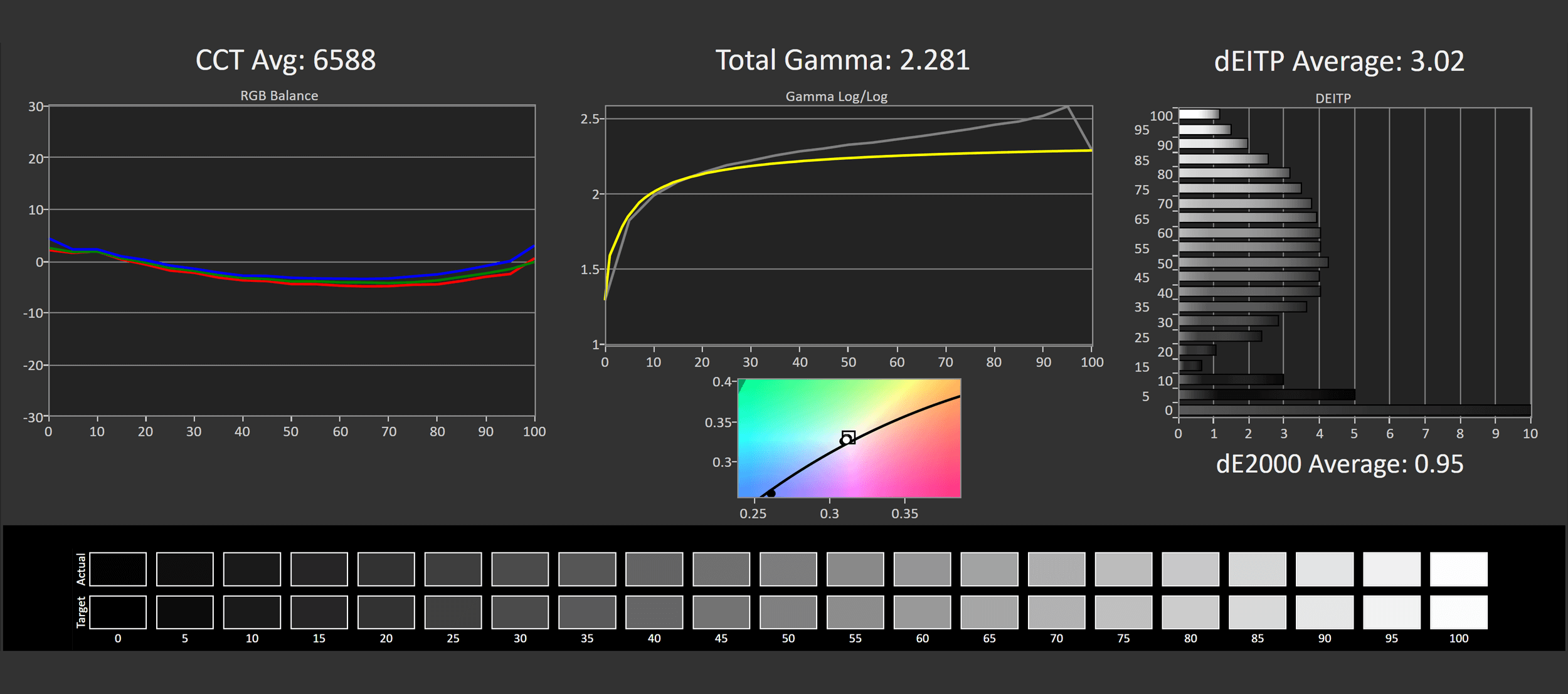
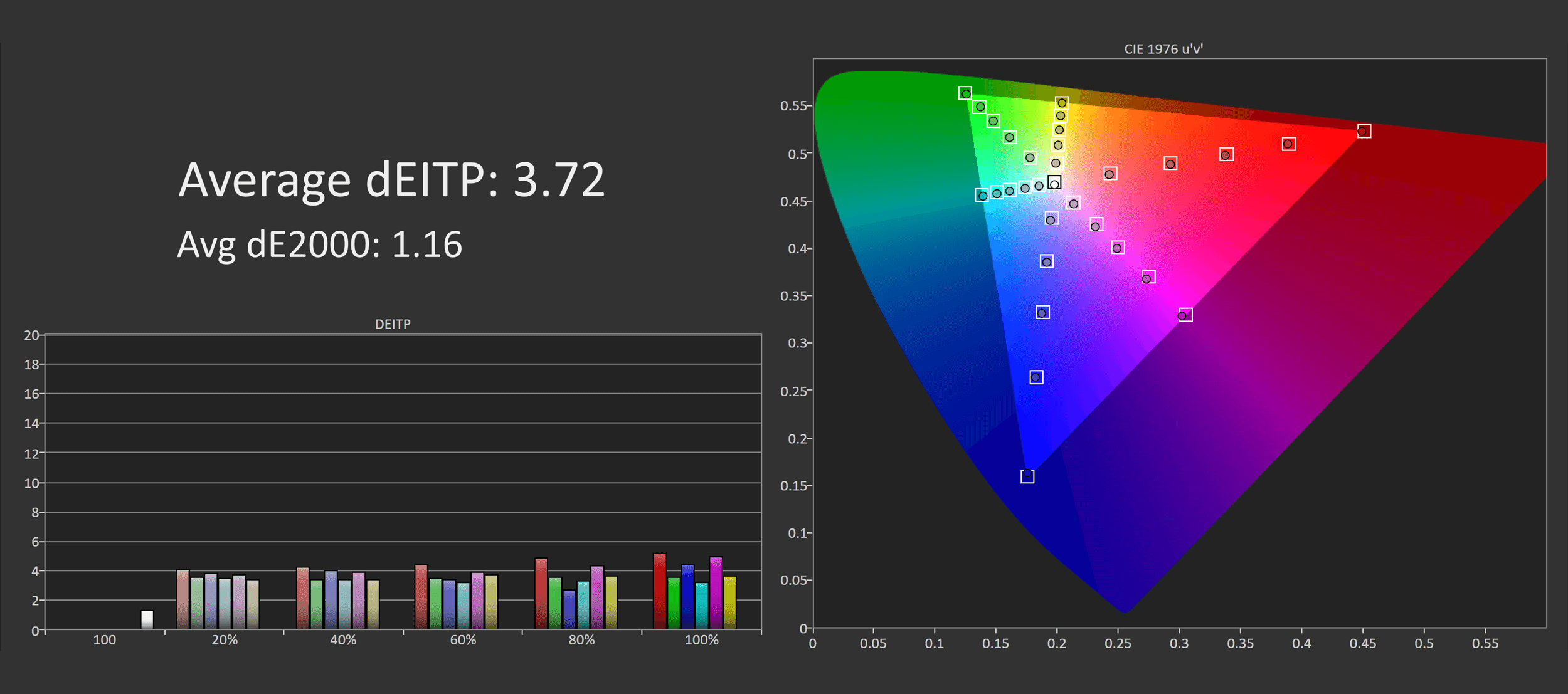
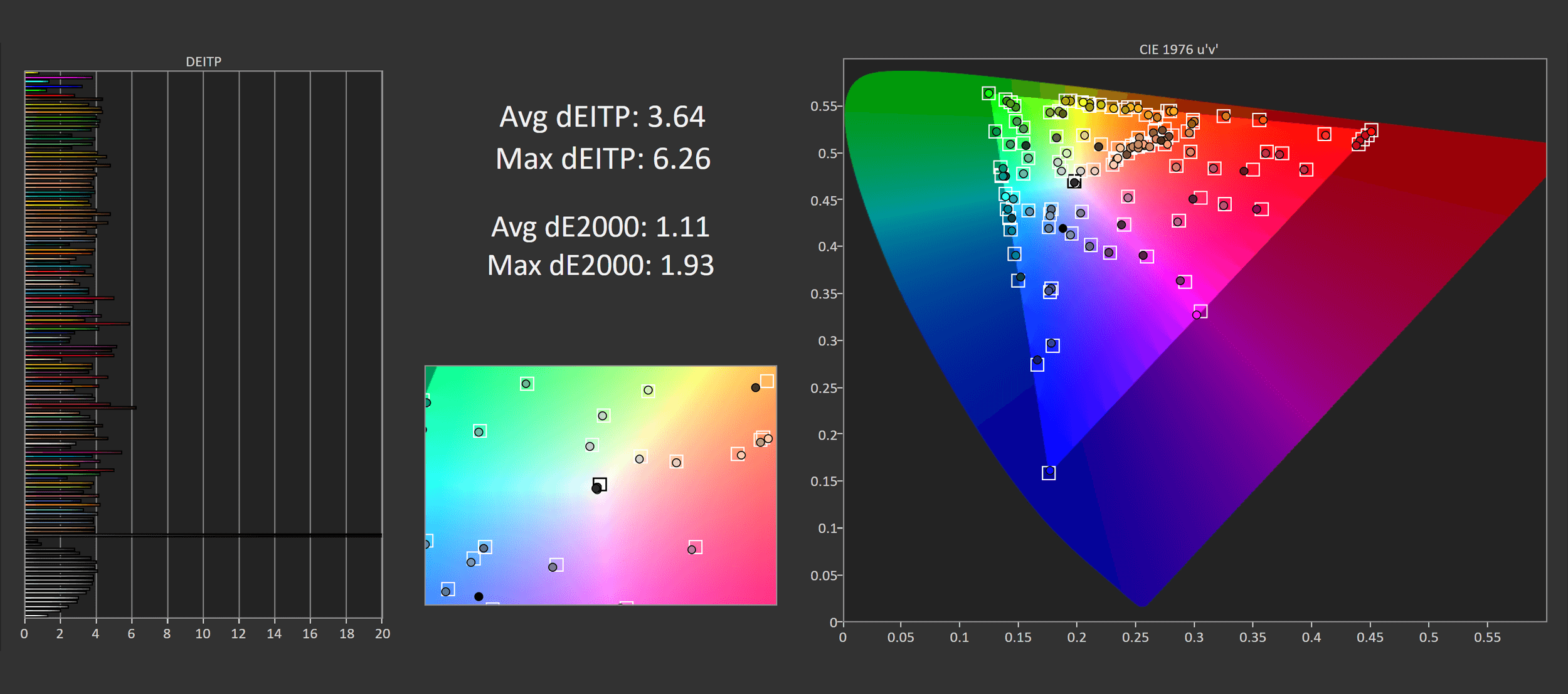
All the same public presentation tin can be improved notably by switching the monitor over to its sRGB mode. Greyscale deltaEs drop by this contour to below 1.0 in deltaE 2000, and just 3.0 in dEITP, which is very strong, scorn some inconsistencies with the gamma curve. Color performance is besides identical hefty, as the color gamut is being managed perfectly and this leads to no oversaturation. All up this sRGB musical mode is a lot better than average and identical usable without any further calibration.
Calibrated Colourise Performance
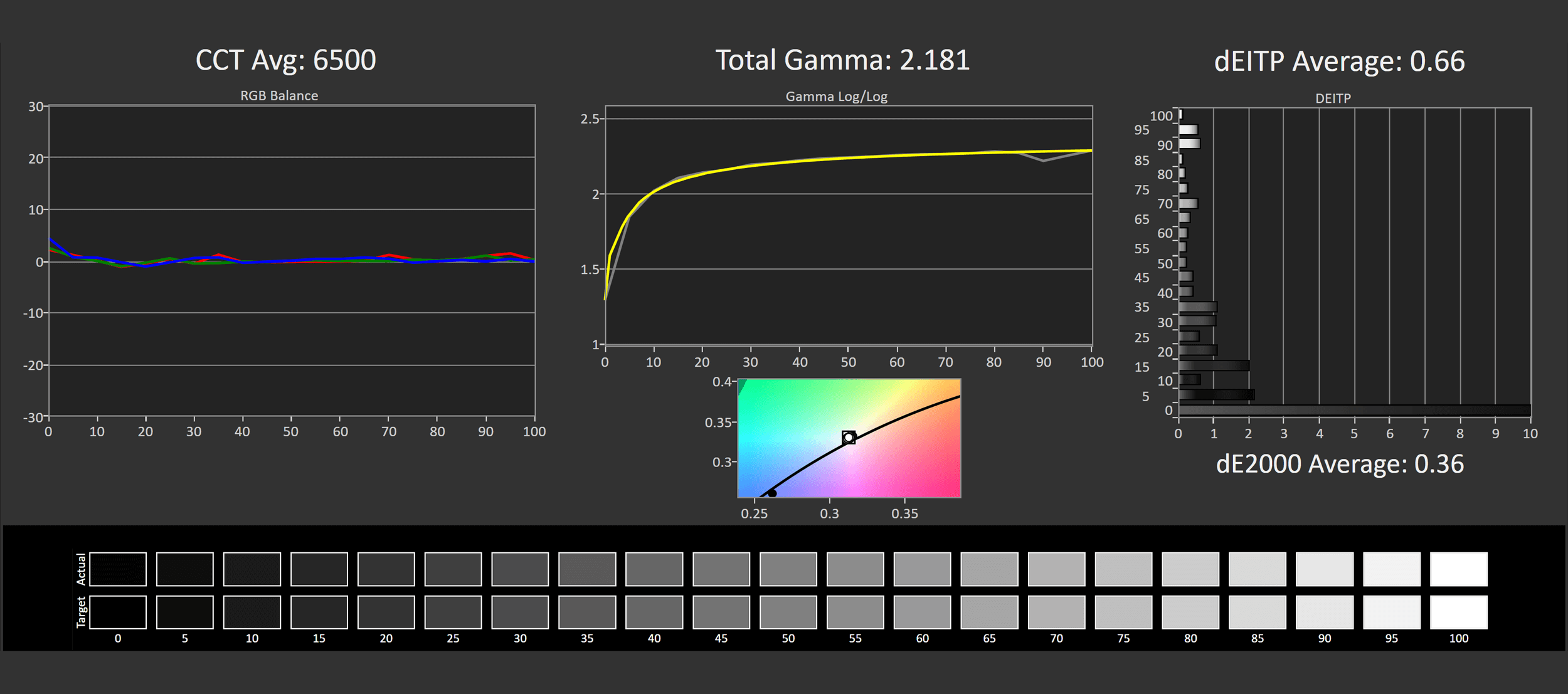
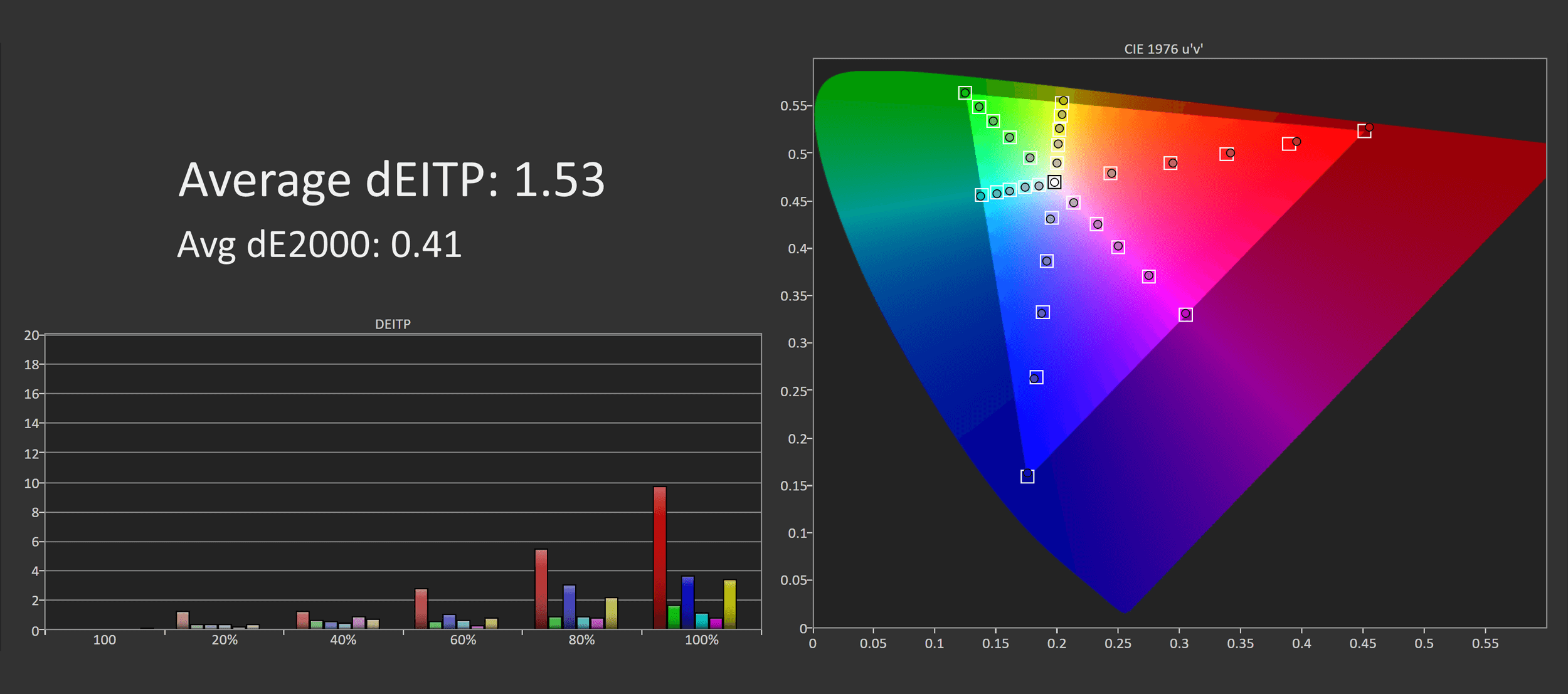
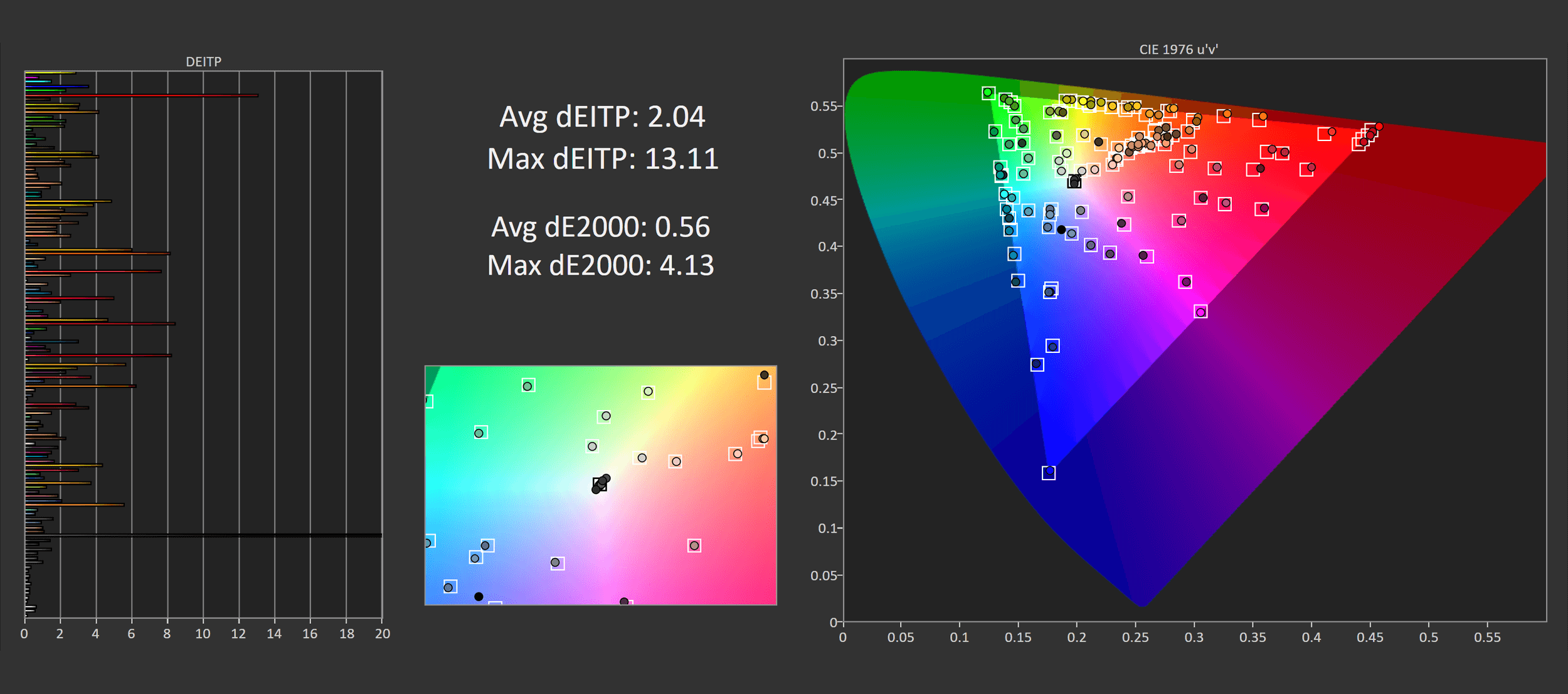
You'll also get extraordinary results for P3 when the monitor is set to its P3 mode, with deltaE performance that's very similar to the sRGB mode. This means in that location's a strong rase of hardware calibration for some of the color spaces the display supports, and calibration can only improve things slightly. I would like to ensure the sRGB mode unlock ovalbumin balance controls, they are locked which isn't a huge deal but even so unnecessary, just outside of that I'm very happy with the calibration existence provided here – so pole-handled as you switch it into the sRGB mode for everyday use.

Brightness is decent, oblation 450 nits in its SDR mode, which is simply beaten by true HDR panels like the PG32UQX. This level of light is similar to the LG 27GN950, but a lot better than the Gigabyte M28U. Minimum luminance isn't amazing though, at 76 nits, which should equal o.k. for most users but isn't every bit low arsenic new monitors can blend in.

Autochthonal contrast ratio is jellied, at 1160:1 with my whole. The 4K version of LG's Nano IPS panel doesn't suffer from the same contrast issues Eastern Samoa with the 1440p versions, and the Eventide Spectrum was even a young better than my 27GN950 sample from LG. Unfortunately though, counterpoint is poor in generalized, owed to existence an IPS panel. VA displays have more than twice the level of contrast, which makes them more suited to dark content or playing games in the dark.
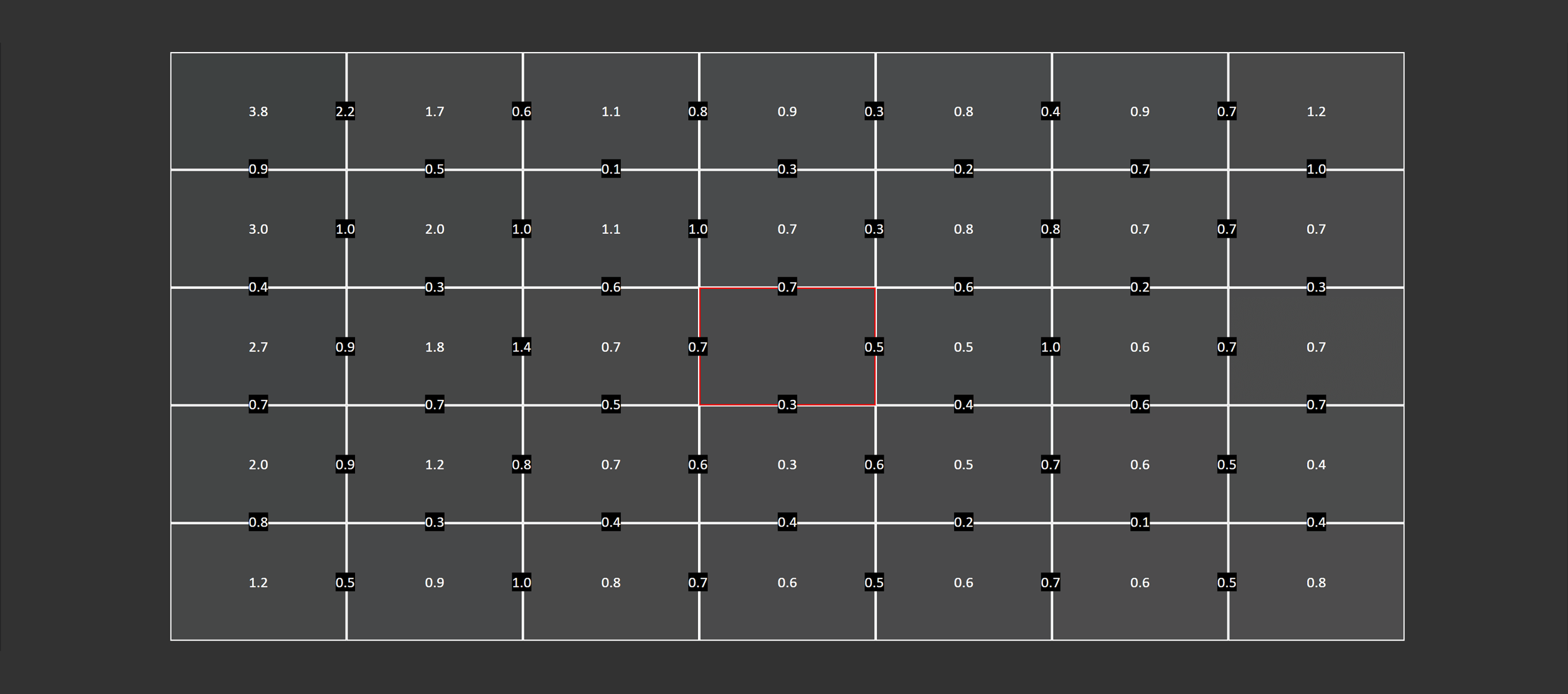
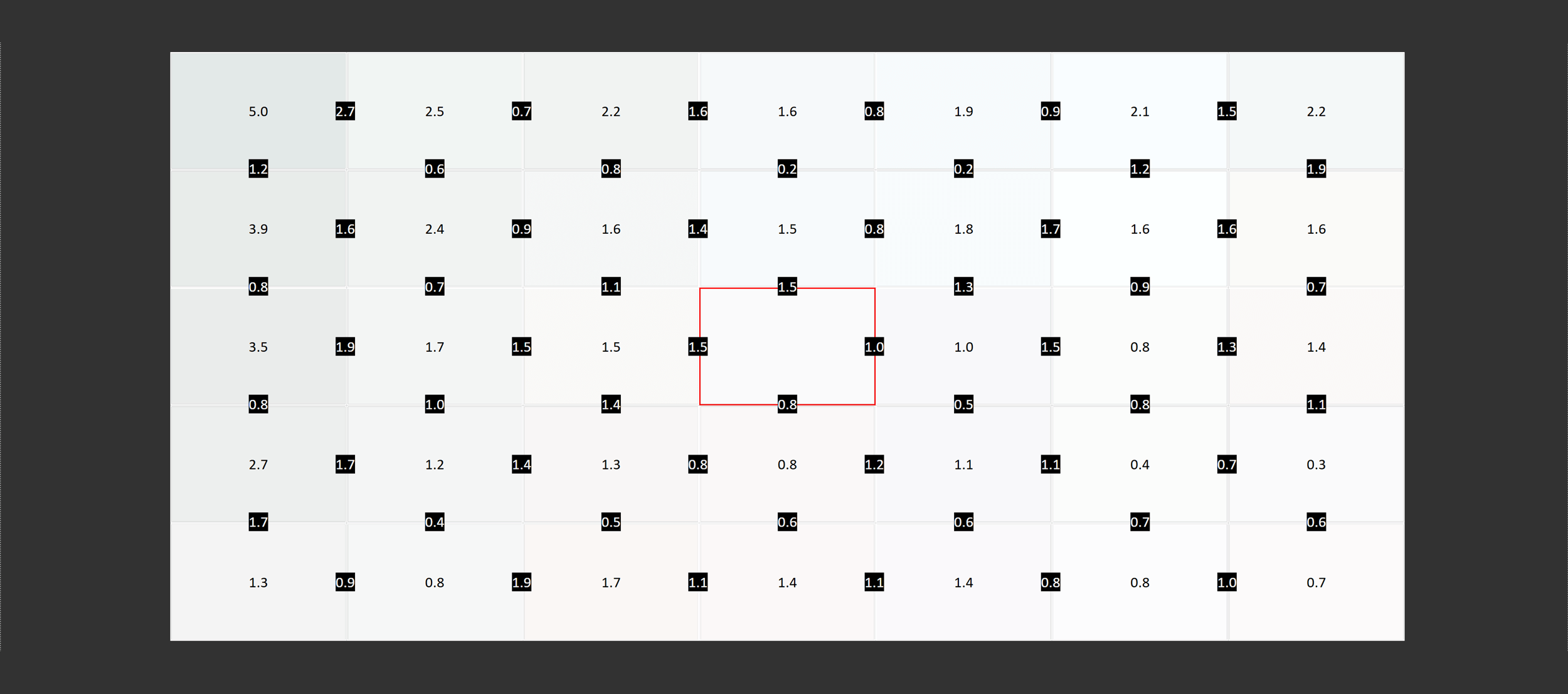
Viewing angles and uniformity were both better, and LG panels incline to have above average uniformness which is great for easygoing creation. The main part of the screen door was very consistent with my unit, and there was only a small sum of money of falloff in the high right corner. I should note that uniformity is building block dependent, and what you receive may be different.
HDR Performance
As for HDR carrying into action, the Eve Spectrum is a semi-HDR ride herd on. While it does battalion respectable brightness capabilities, a wide color gamut and some form of local dimming to improve the contrast ratio, it fundamentally lacks the hardware for true HDR visuals. The monitor only has 16 edge lit dimming zones, which leads to a lot of flaming and haloing when viewing HDR content. In a lot of cases, all dimming zones are illuminated, which prevents the display from actually showing bright and dark areas close together.



To quickly run through HDR carrying out, the maximum brightness the panel can achieve is solid, at around the 700 nit mark whether sustained…. as a flash… or at small windowpane sizes. In fact across various window sizes the brightness never dips below 600 nits, whether sustained or peak, which leads to solid brightness, especially at normal monitor viewing distances.



Where the Spectrum suffers is in contrast. The absolute best contrast ratio I could accomplish was 20,000:1, which was 'tween a full black windowpane and a full Theodore Harold White window, hardly realistic. Within a single ensnare, the trump I could achieved dropped to just 11,600:1, which is well short of the sorts of contrast ratios HDR is recommended for.
So in the worst cases, when dark and bright objects are on screen side by incline, the Spectrum reverts to its native contrast ratio, so in those situations it's not capable of HDR-level performance at all. You can get a better-than-SDR experience more or less of the prison term, but most of the time the feel for is quite an poor, so I wouldn't bargain this for its HDR glasses or capabilities.
What We Learned
There's very much to like from the Eve Spectrum 4K from a performance perspective, piece it's less stellar on the availability and pricing advanced. Outside of HDR, where the Spectrum is not very good, this monitor performs precise well. Response multiplication are decent, and honorable where you'd want them to make up for a modern IPS gaming monitor, plus we get very good backlight strobing and an important feature in HDMI 2.1.
This isn't atomic number 3 revolutionary as it once was now that we have more competition in the 4K 144Hz monitor space, just the Spectrum ticks all the boxes for motion performance and IT's great to game on.
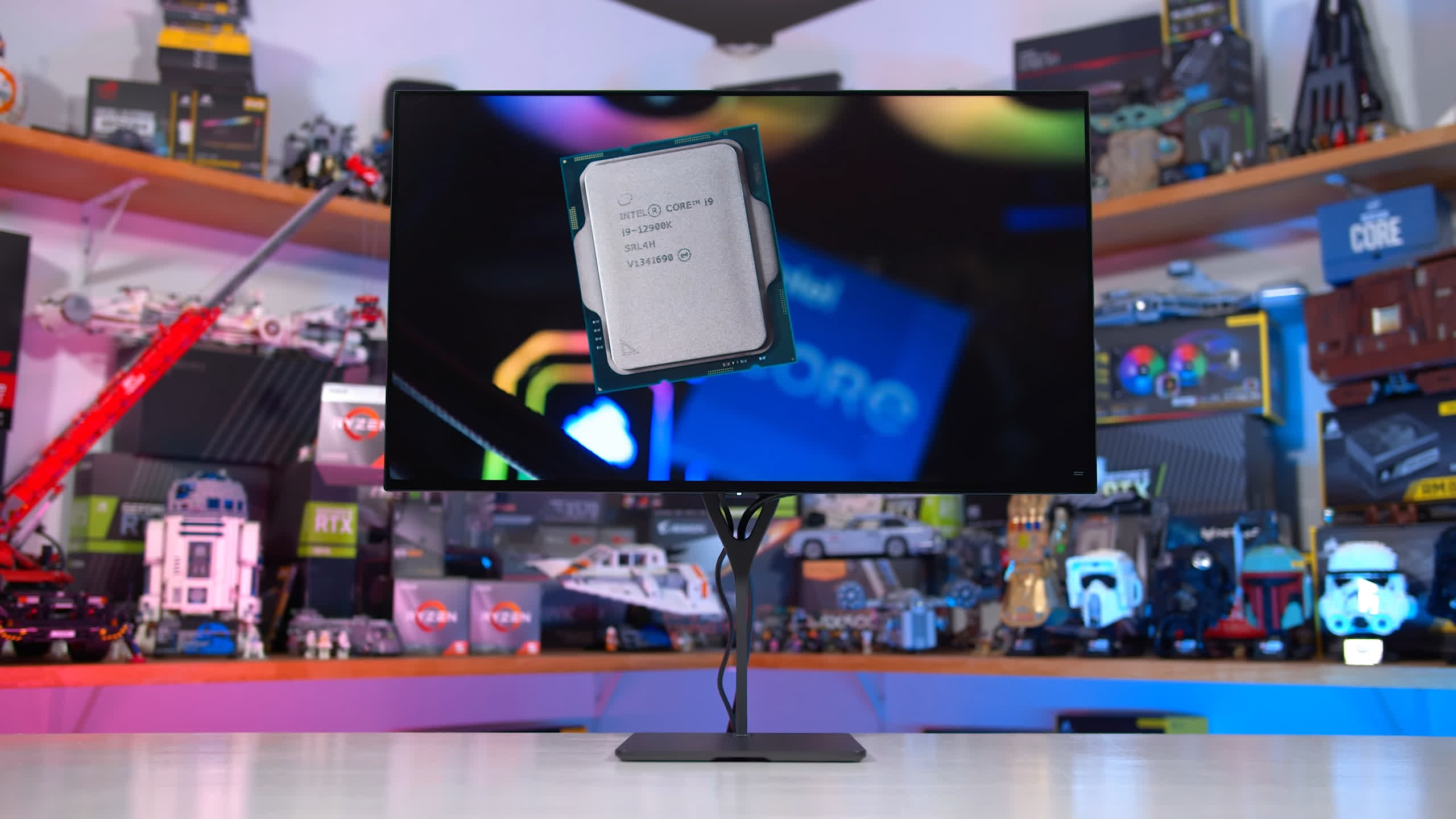
Emblazon performance is what I liked the most. Mill calibration in the sRGB mode is very good, and it's clear Eve fagged time ensuring each building block passes some screen of manufacturing plant calibration process. It's also well suited to smug creation in the P3 mode, which has decent hardware calibration American Samoa well. Throw in good uniformity and demarcation, and there's a great amount of versatility to use the monitor for gaming and productivity work, which you'd need out of a 4K monitor.
While operation is brawny and the Spectrum packs a modern feature arranged, I don't think the whole "crowd developed" thing has added much to the display. There's few things they might not induce enclosed differently – like whole number grading support – but information technology shouldn't pick out an online assembly for a monitor God Almighty to realize they should mill calibrate their squealing-end display, or to optimise the backlight strobing. That aspect is a little gimmicky considering several unusual monitors manage just as well Hera.
As for its direct competitors, with Eve charging $900 for this display including the stand, it competes at the malodorous-end of the 4K 144Hz securities industry with products like LG's 27GP950, the newer version of the 27GN950. The Spectrum 4K is a better version of the 27GN950 with better performance.
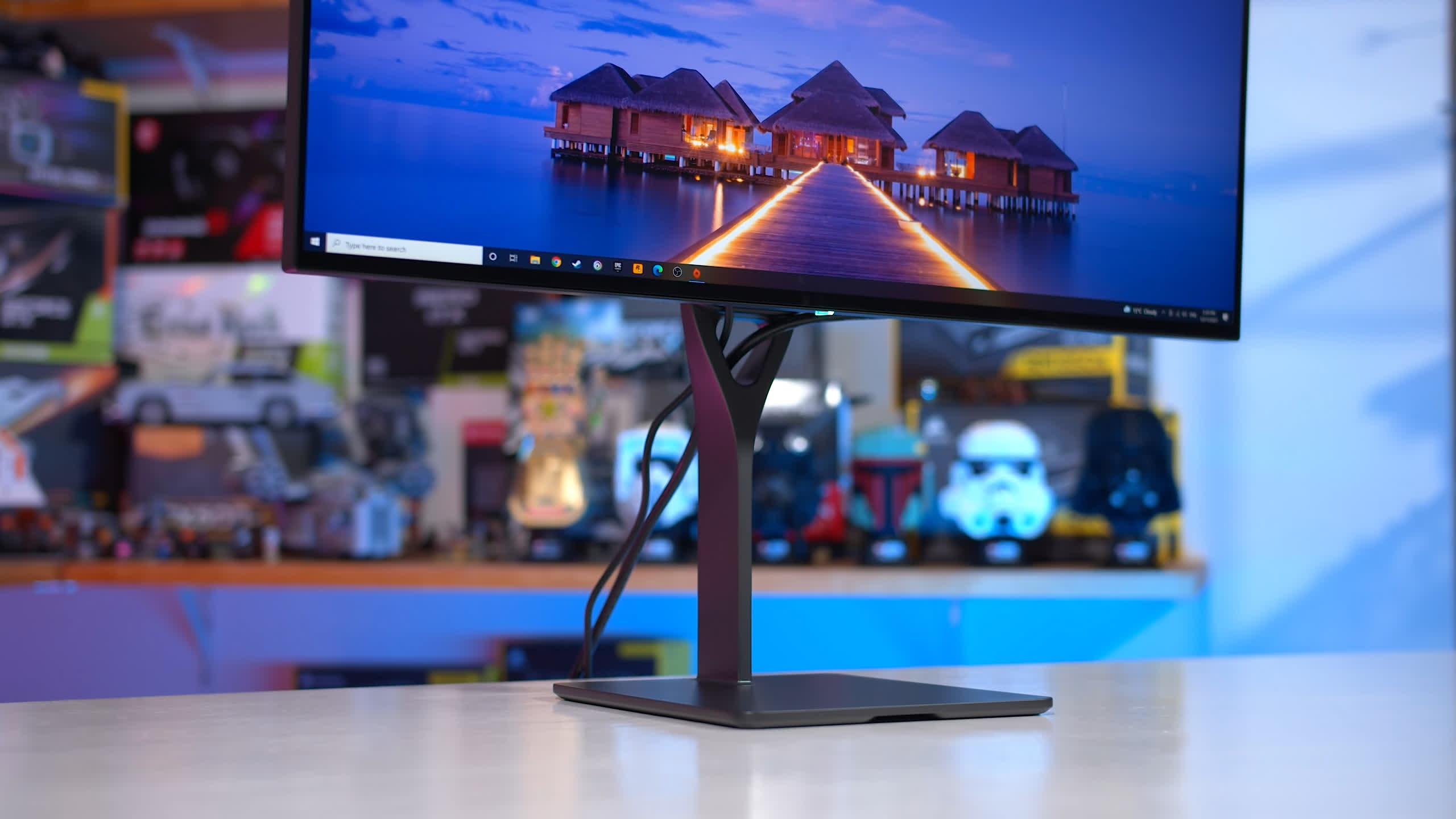
However I wouldn't automatically recommend the Spectrum when products like Gigabyte's M28U live. For $650, the Gigabyte comes pretty close to the Spectrum's performance – including unattackable response times, HDMI 2.1 and great factory calibration, only it's a great deal cheaper. The Spectrum, like the 27GP950, is not a great prise choice and you're close astir paying a big premium for a few extras. This exhibit power Be the way of life to go if you require the backlight strobing, operating theatre integer scaling, but for everyone else, the latest coevals of 28-inch 4K monitors offers better be intimate for buck.
As for the release strategy, Eve was attractive pre-orders for this display in mid-2020 with an expected free date for the end of that year. Back then the monitor was supposed to personify $700 with the stand included, and the company intemperately touted offering the first 4K gaming monitor with HDMI 2.1. But that was past, and surely it'd have been an excellent product in that market and timing, which would explain why so umteen people jumped along plug-in to pre-govern.
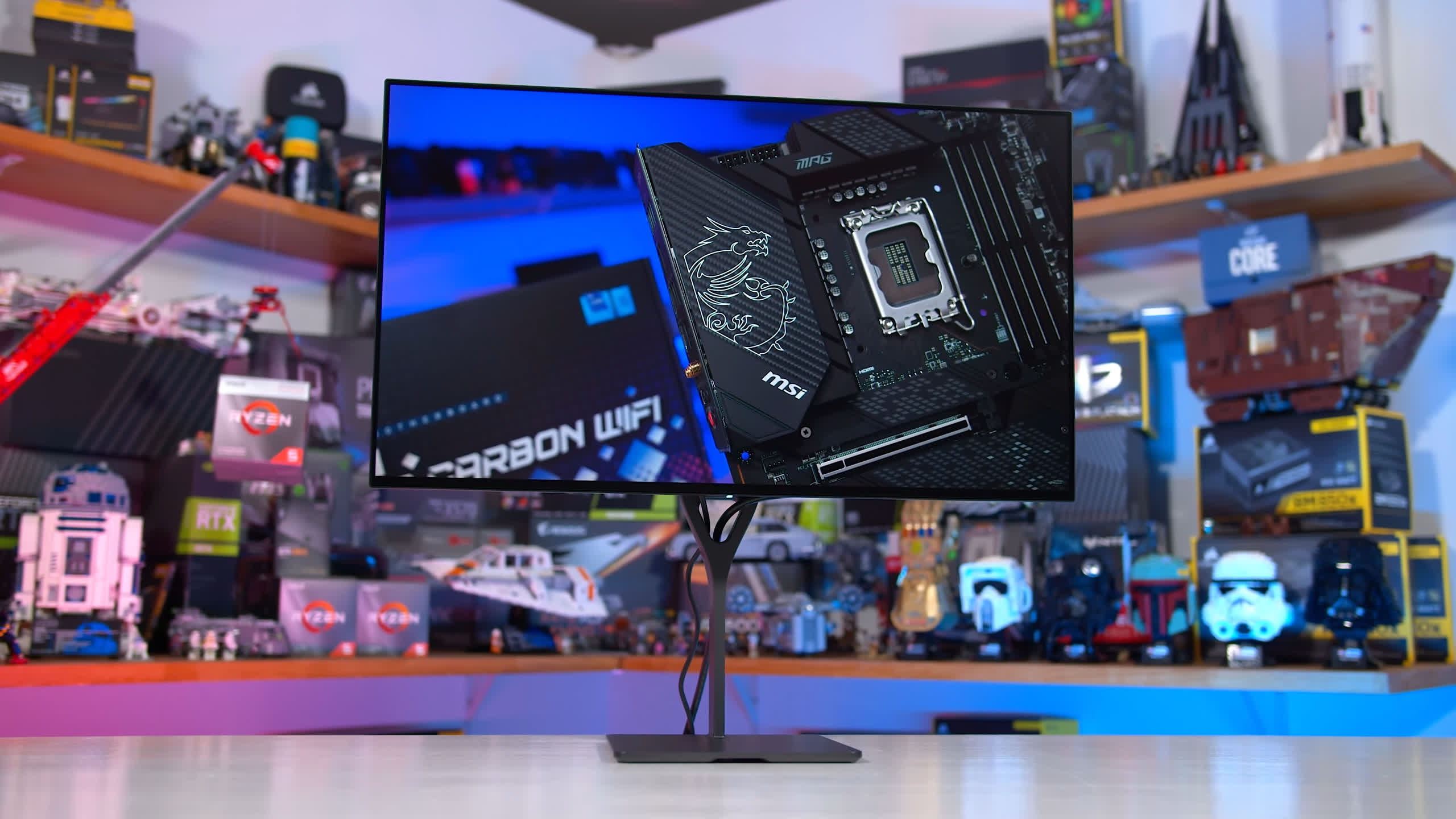
But delaying the production well into 2021 saw Eve lose its private-enterprise advantage. Modern 4K monitors hit the market earlier this class delivering most of what Eve promised, at similar or better price points.
We always urge against pre-ordering and here's one prime example of wherefore you shouldn't and wherefore a accompany's entire found strategy shouldn't be based around it. The Spectrum 4K is a good monitor, but it's nonentity excessively special in today's marketplace.
Shopping Shortcuts:
- Even Spectrum 4K on Eve
- Asus ROG Swift PG32UQ along Amazon
- LG C1 48" Organic light-emitting diode TV on Amazon
- Asus ROG Blue-belly PG32UQX on Amazon
- GB Aorus FI32U on Amazon
- LG 27GN950 on Amazon
- Samsung Odyssey G7 32" on Amazon
- HP Omen X 27 on HP Store
Source: https://www.techspot.com/review/2359-eve-spectrum-4k/
Posted by: gillhamboyaceing.blogspot.com


0 Response to "Eve Spectrum 4K Monitor Review - gillhamboyaceing"
Post a Comment